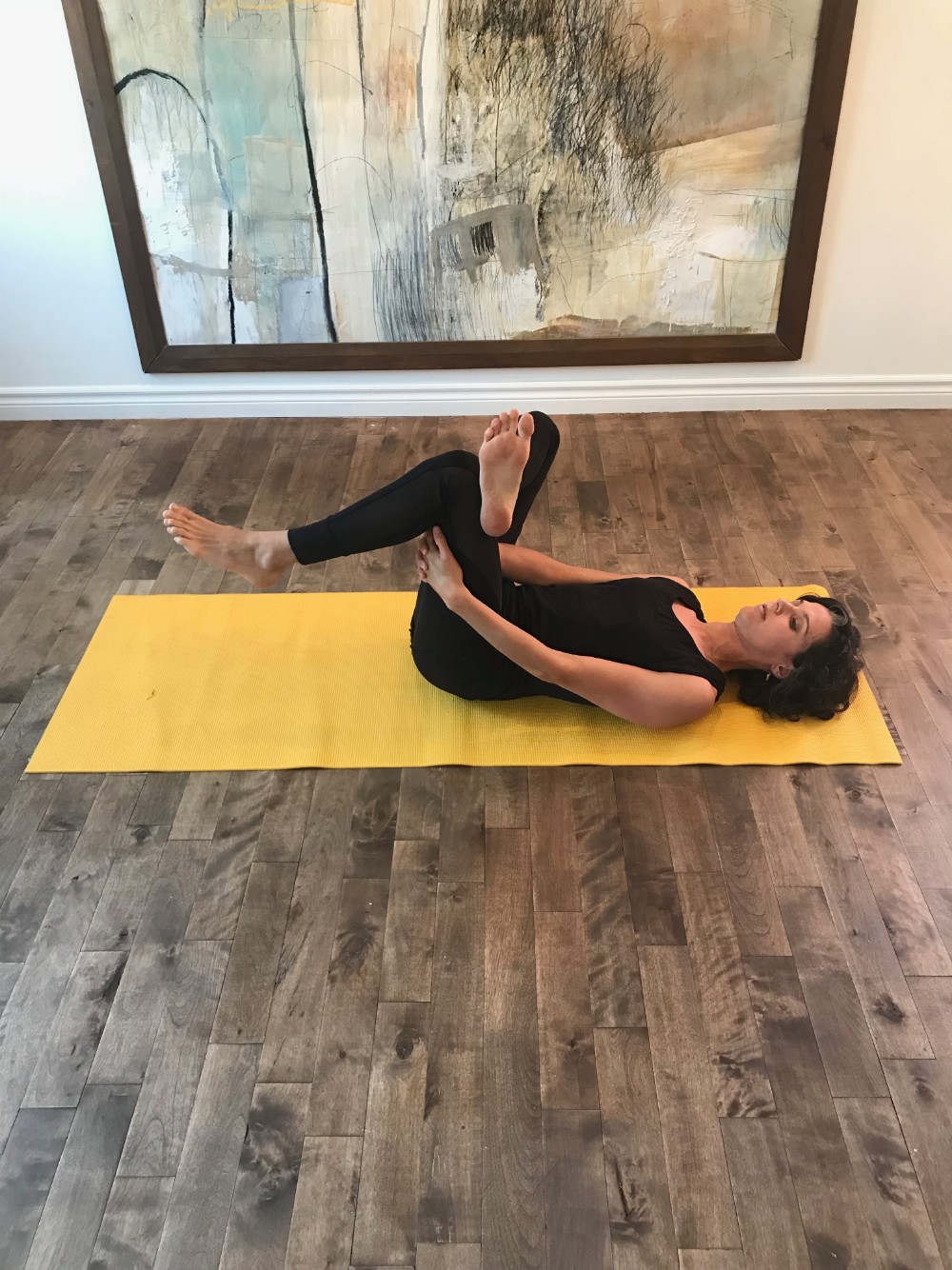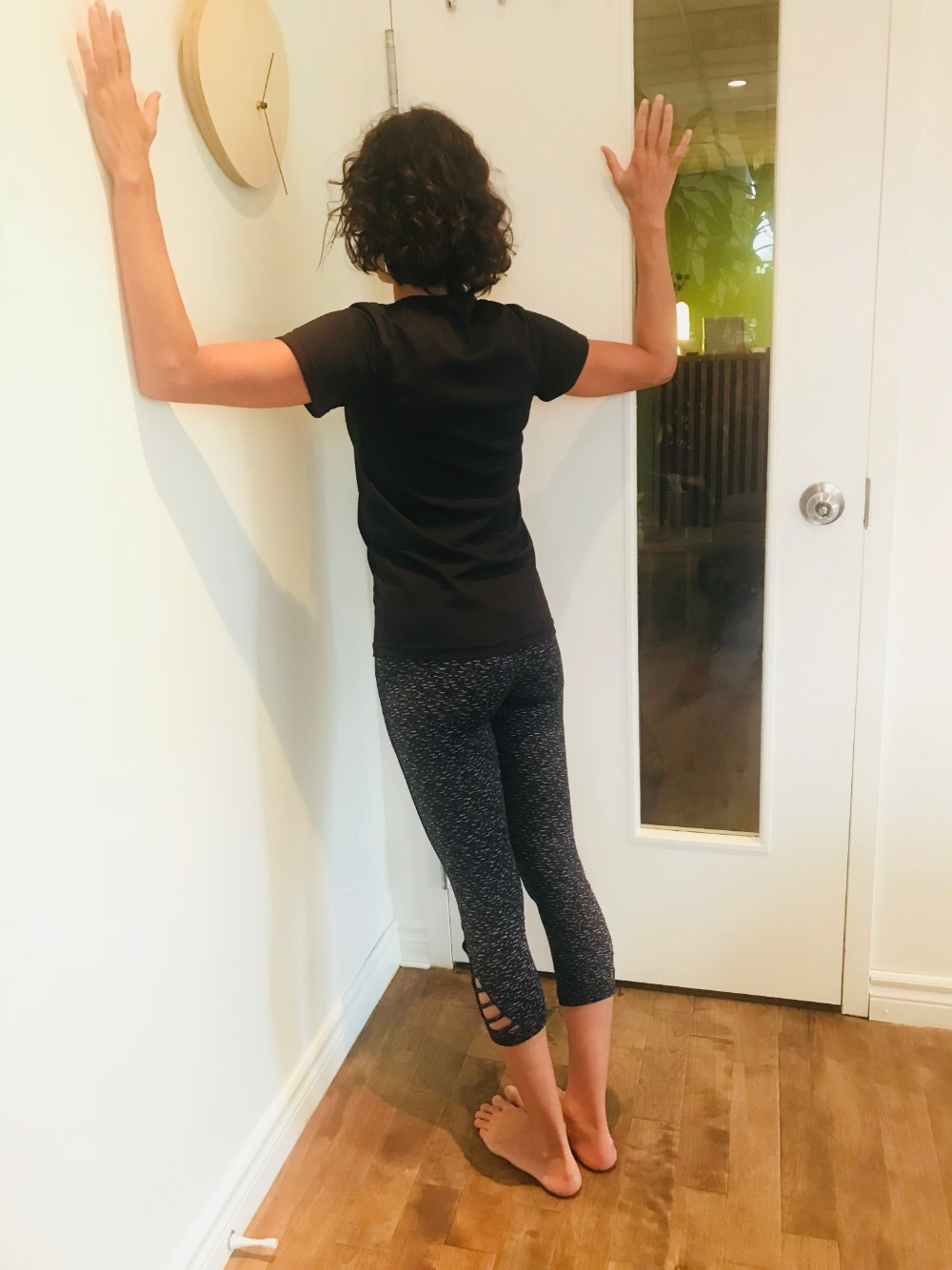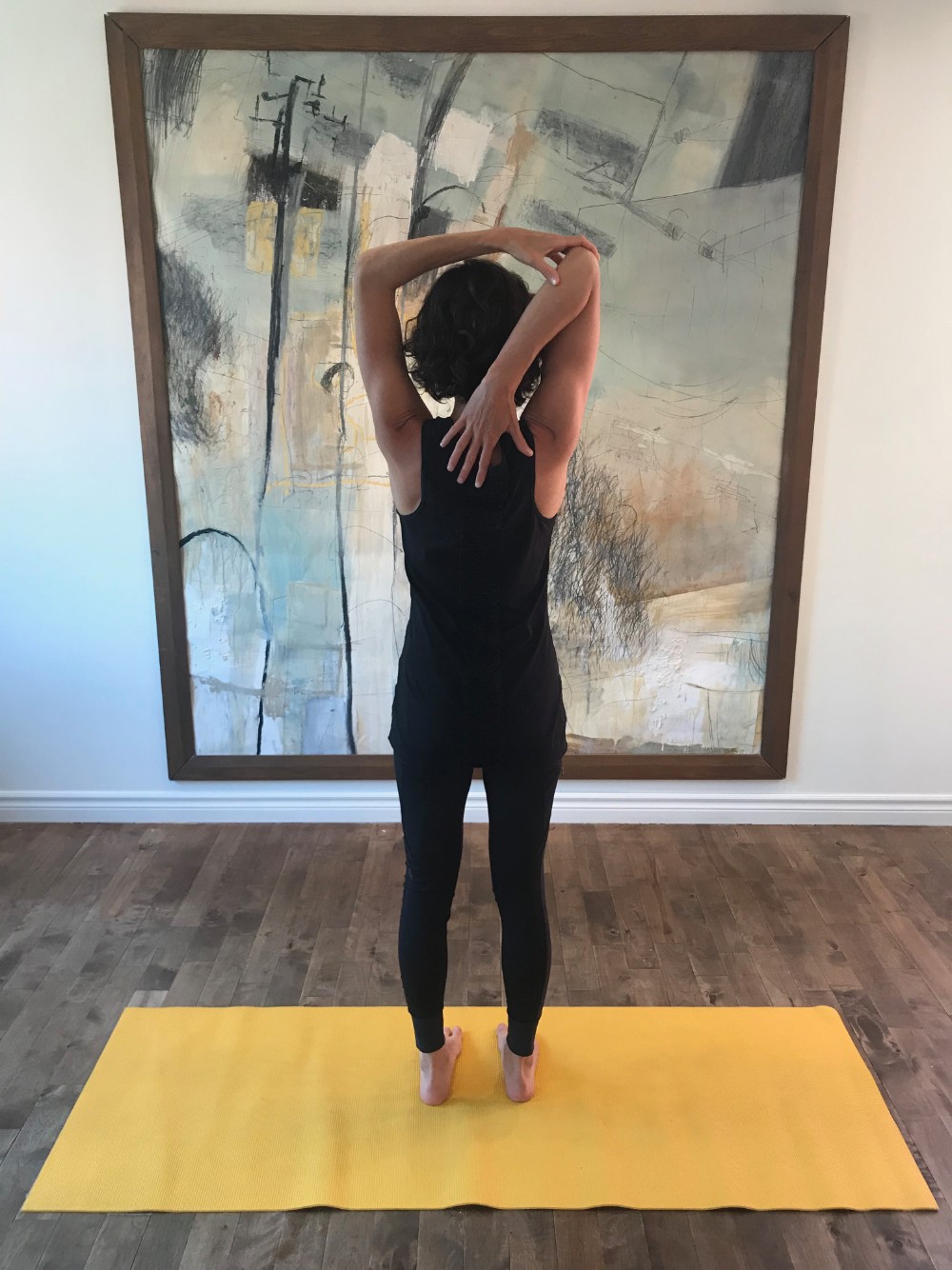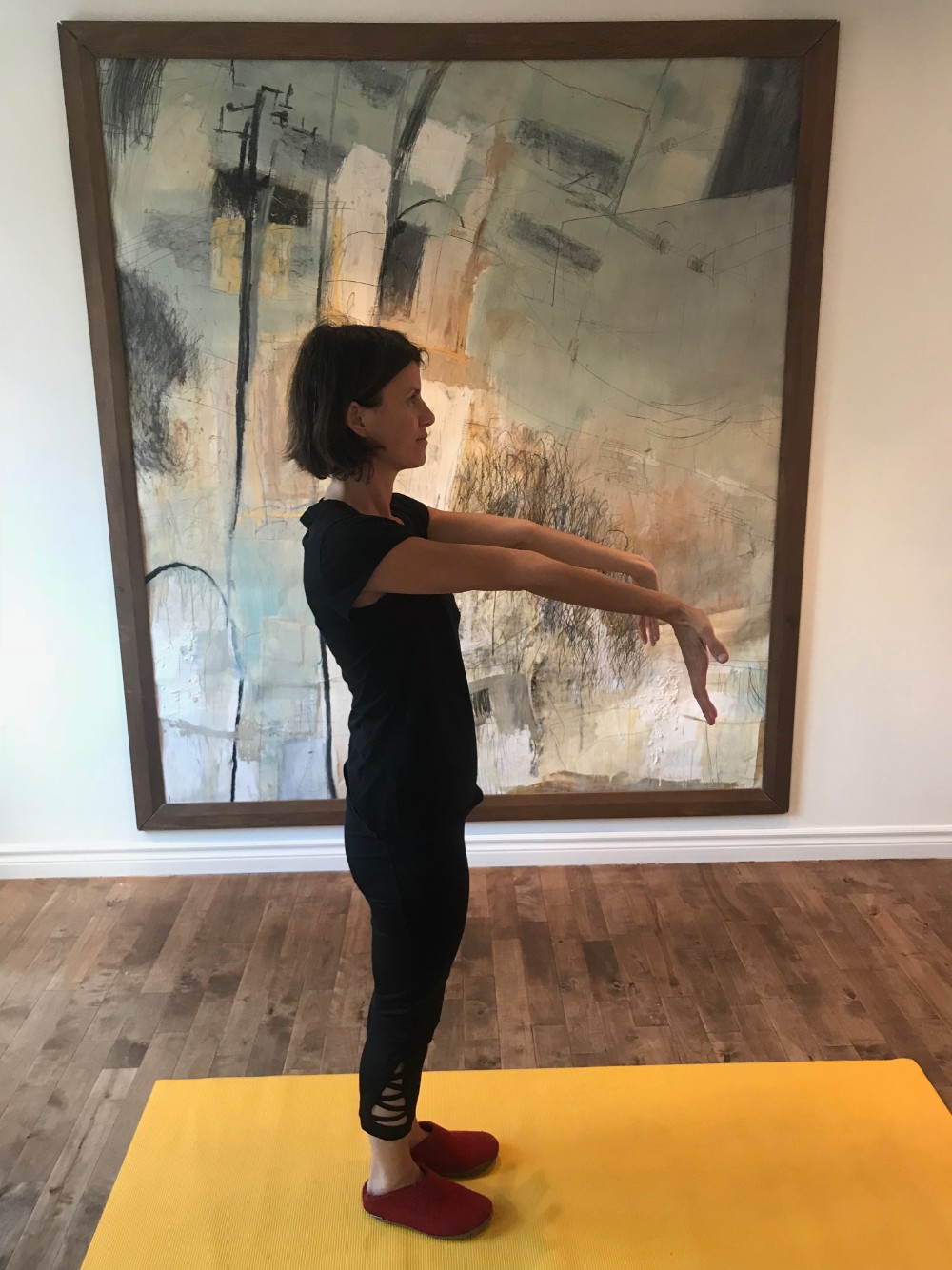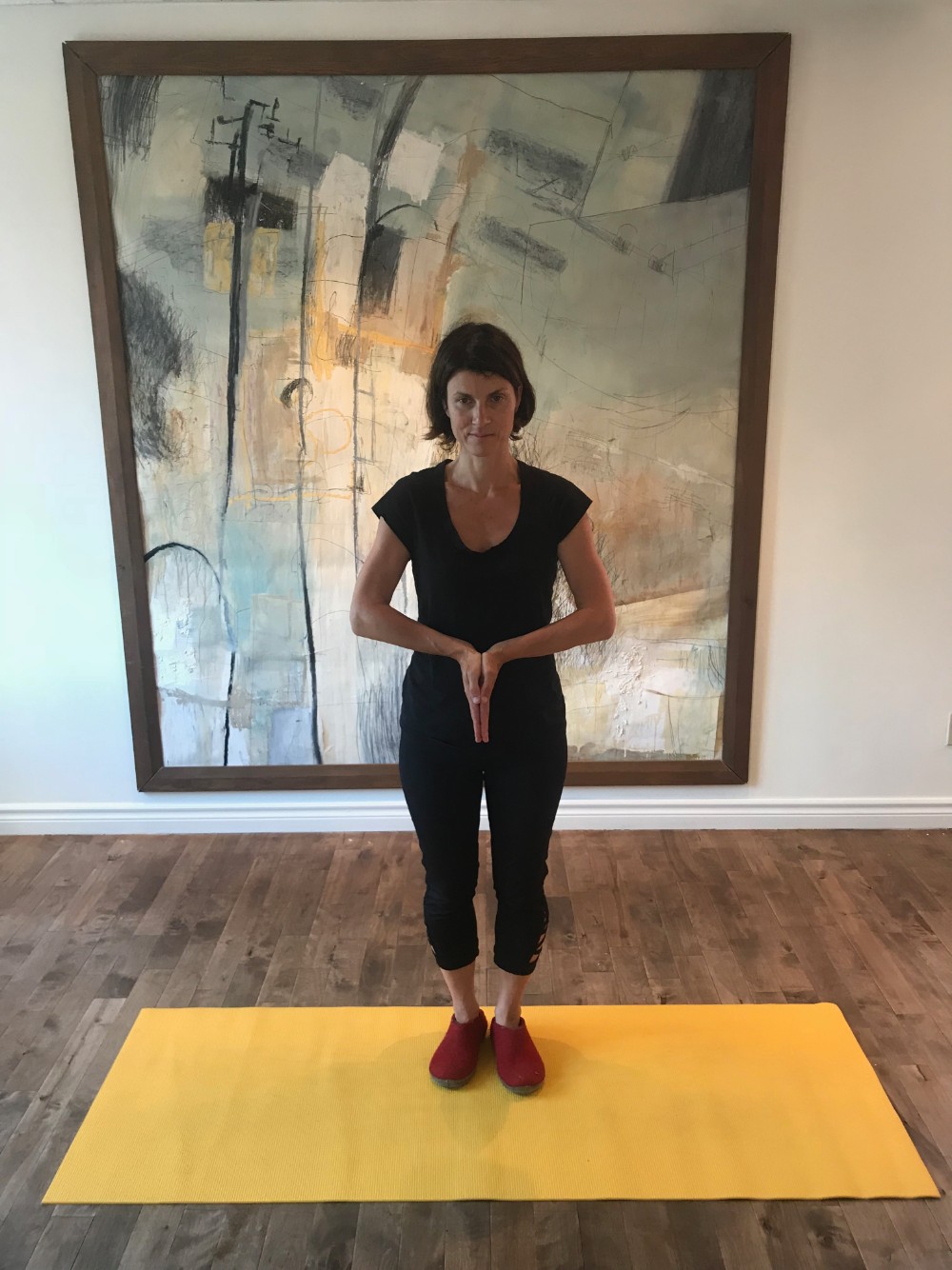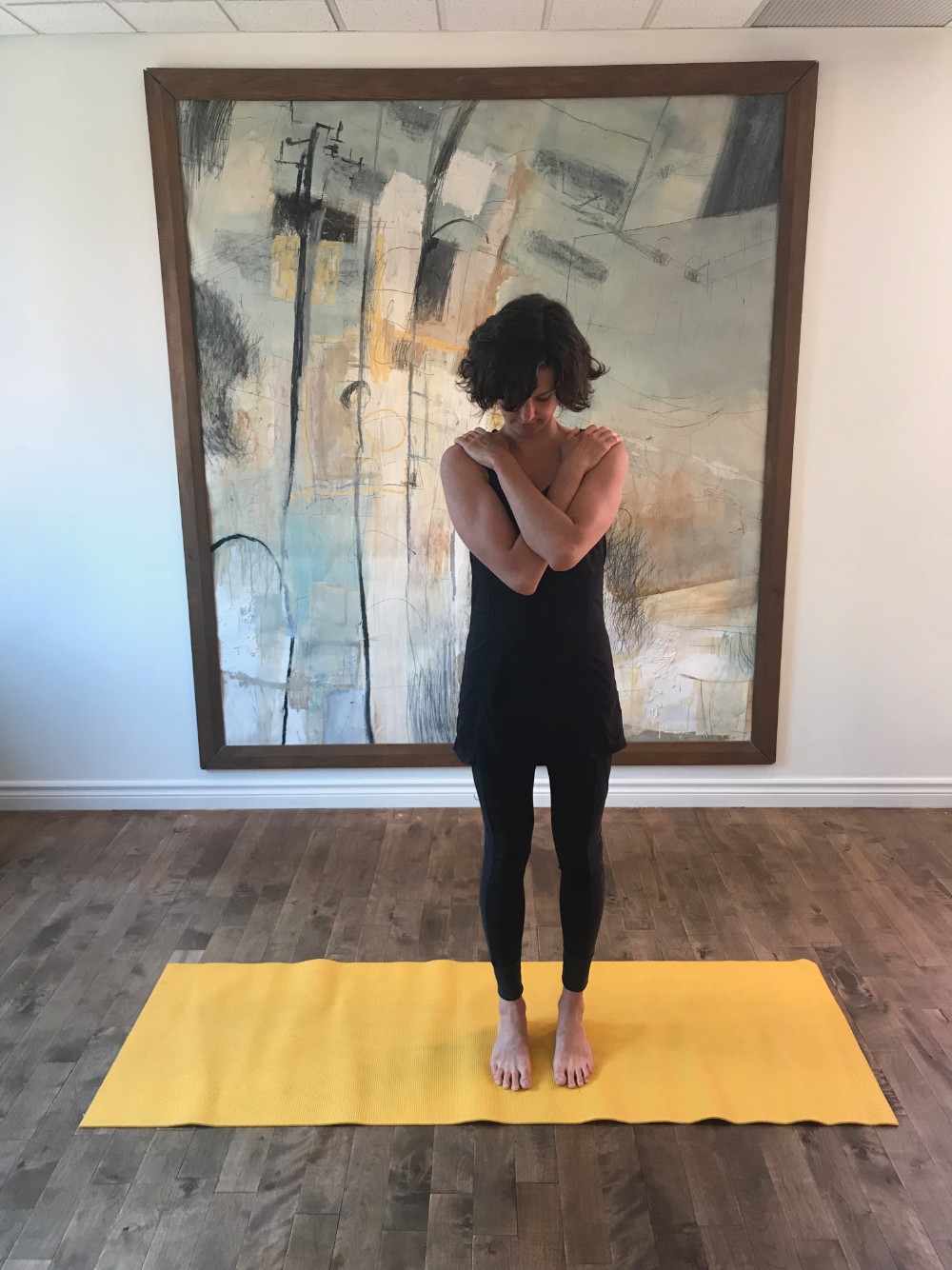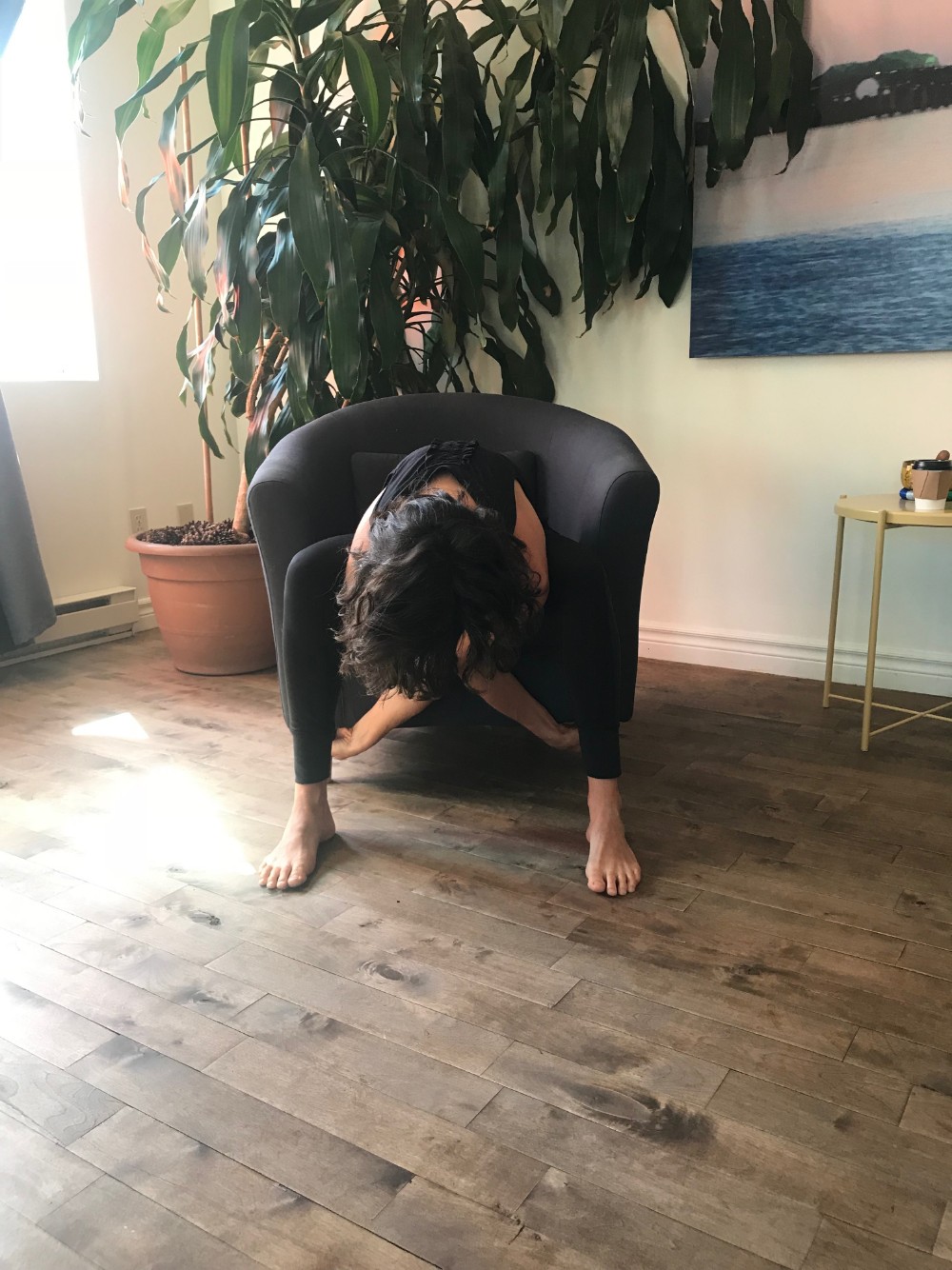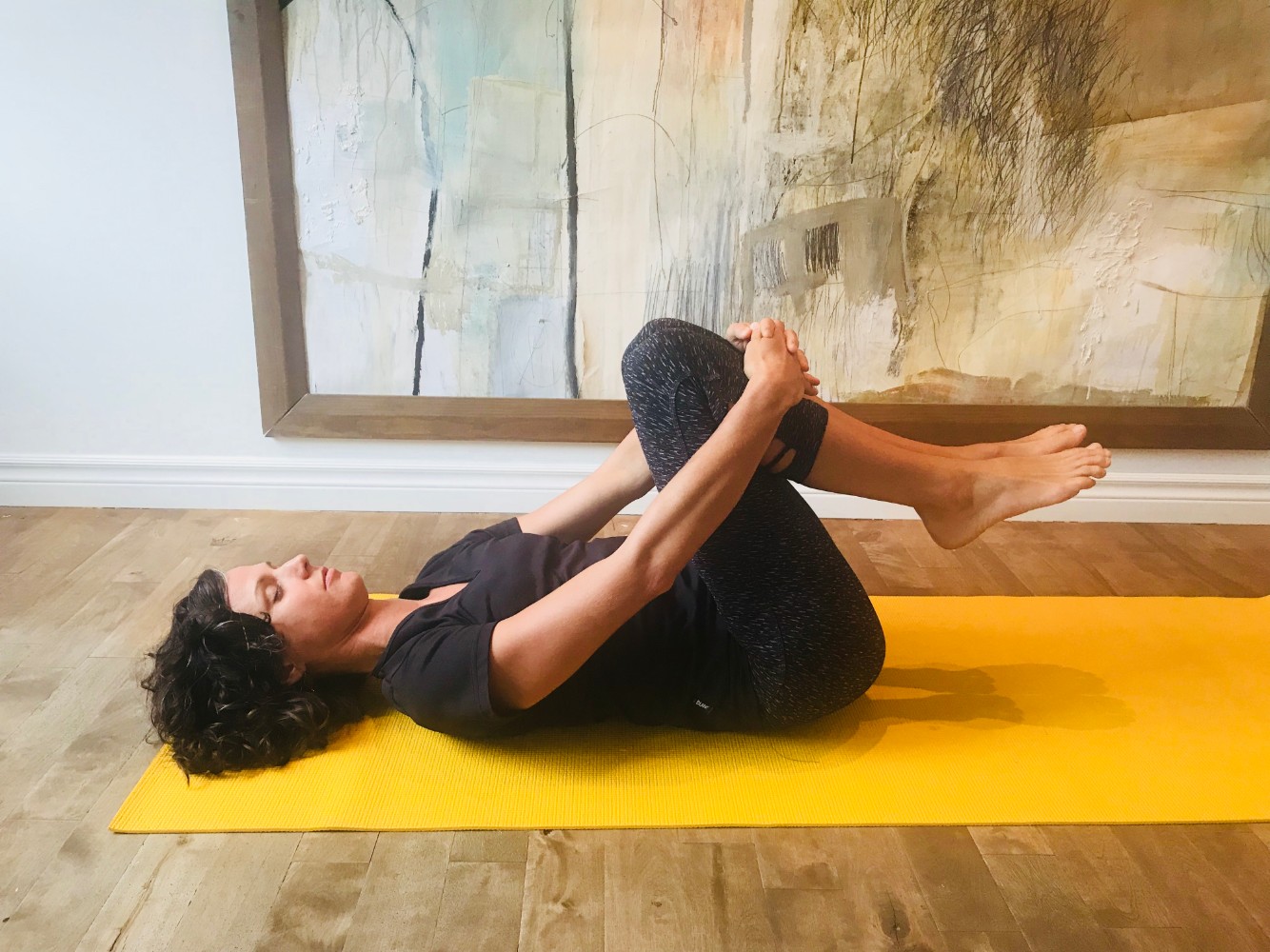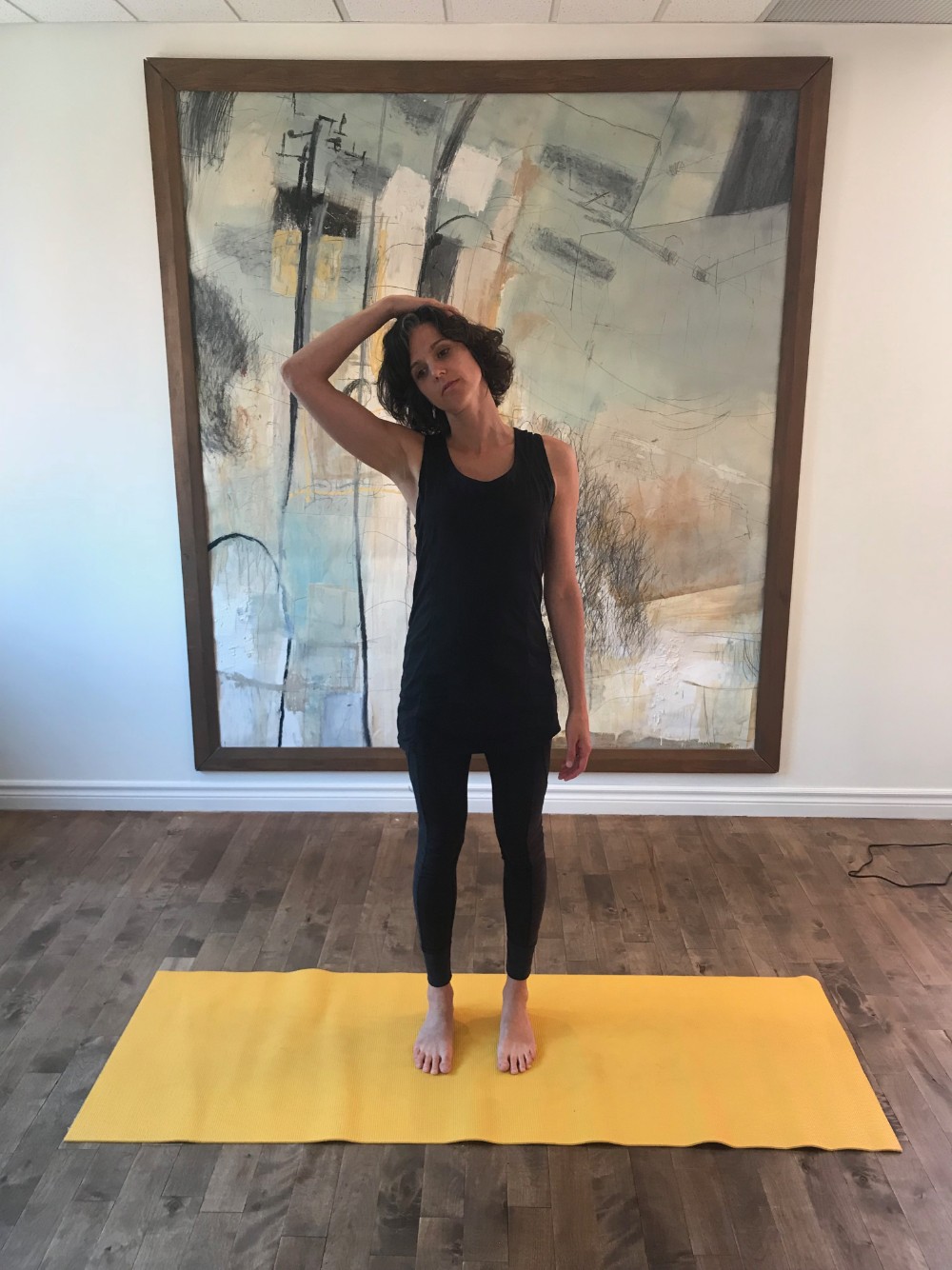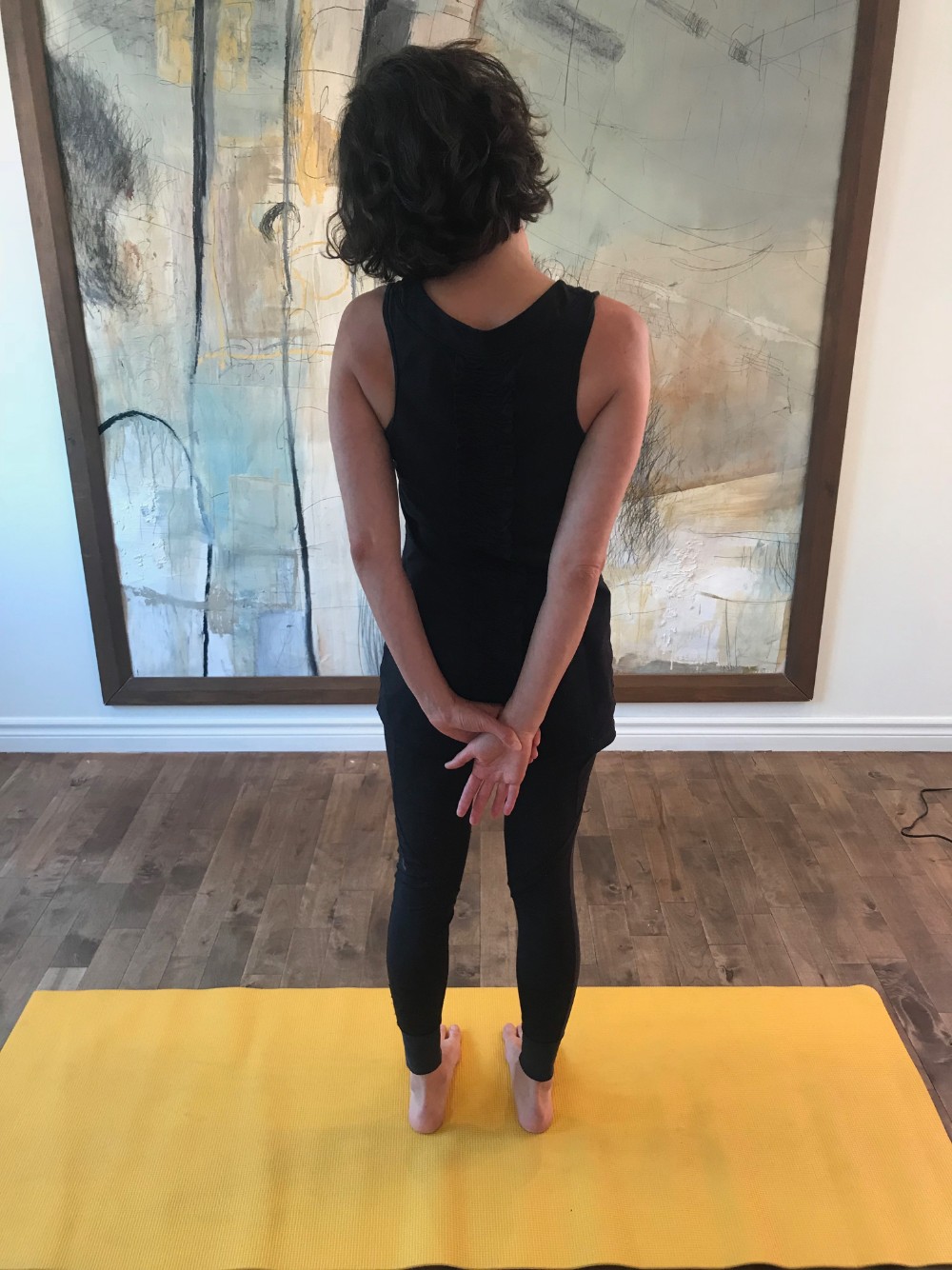Resources
Your health is our utmost concern and we want to inspire and empower you to maintain the optimal balance. This section includes health tips including immune boosting recipes, stretches, meditations and much more. We hope you find it informative.
Stress Management
Tips to Help With Stress Management
Nutrition and Supplements
Magnesium
B complex
Ashwaganda
Protein
Essential Oils (do not put directly onto skin)
Lavender essential oil
Neroli essential oil
Rescue remedy
Bach flower remedies for emotional blockage
Activities That Help
Taking a shower (full body, head included)
Walking on the grass barefoot
Being in nature (parks, by the water, etc.)
Meditation
Breathing Techniques
Some tips to help with breathing:
Exercise 1
To calm to mind and activate your core, exhale as if blowing into a straw (with pursed lips). Inhale through your nose. Keep the breath soft and balanced between inhales and exhales. Practice for 1-2 minutes.
Exercise 2
Abdominal breathing. Lie onto your back with bent knees, as you inhale, let your abdomen rise and as you exhale, feel your abdomen lower towards the floor. Practice for a 2-5 minutes.
Grounding
Walk barefoot on the earth and imagine you’re a tree with your torso being the trunk of the tree and from the soles of your feet, roots anchoring deeply all the way to the center of the earth.
Calming Techniques
Exercise 1
Tune in to the breath and invite balance between exhales and inhales. If you can, lengthen exhales.
Exercise 2
Child’s pose, or seated forward fold for 3-5 minutes
Exercise 3
Gratitude: think of one thing or person you’re grateful for and infuse this feeling into your heart.
Meditation App
Stretches
Daily stretches help maintain muscle and joint flexibility; they prepare them for the variety of movements they’ll perform throughout the day and protect injuries caused by jerky or accidental movements. They also alleviate tensions and anxiety caused by modern life stresses. Practice these exercises in a relaxed manner, breathing naturally and regularly. Slowly stretch: never induce painful sensations.
Make sure to practice the stretches slowly, pain-free and without bouncing.
Sciatica
Stretch to Help With Injury
Piriformis stretch. Lying on your back with knees bent, bring your ankle towards the opposite thigh, near the knee. Reach your hands behind that thigh and draw it in towards your torso. Hold for 5-10 breaths then switch sides.
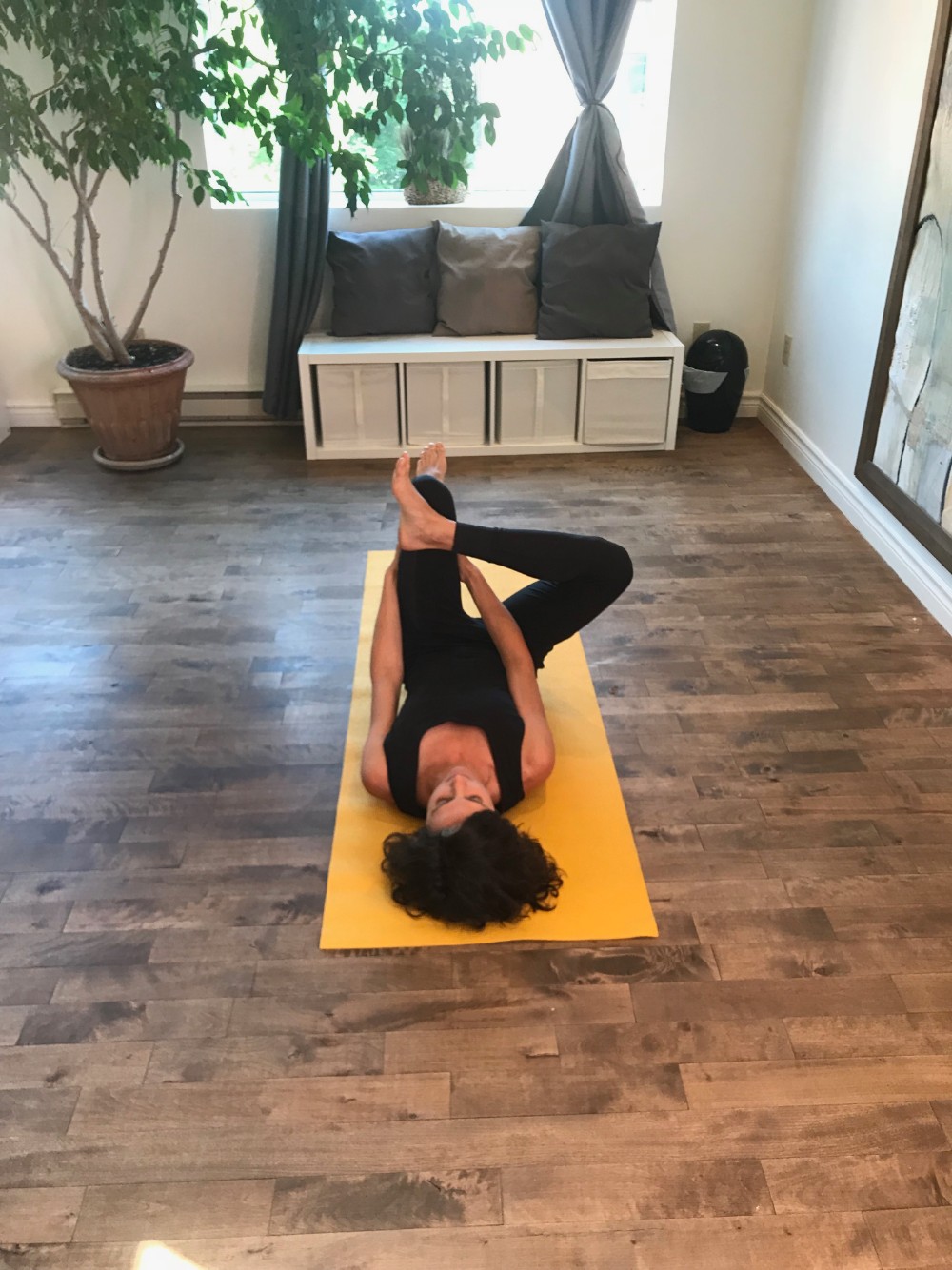
Shoulders & Arms
Stretch 1
Stand beside a wall with the arm extended at shoulder height, palm flat on the wall and open the chest. Can be done with elbow at 90 degrees. Hold 5 breaths/side and repeat 2x.

You may also do both shoulders at the same time by using a corner, bending the arms to a 90 degree, palms onto walls, drawing chest towards corner. 5-10 breaths.
Stretch 2
Bend one arm and bring the palm of that hand towards the middle of your back. Draw the elbow towards the midline of the body and backwards keeping your neck and neck in neutral alignment. Hold for 5-10 breaths then switch sides.
Tips to Help With Frozen Shoulder
It is basically a question of gently and progressively getting the shoulder moving again. The following exercises can help:
- Getting the arm up over your head
- Getting the arm to externally rotate while lying down
- Getting the arm to externally rotate while standing
Plantar Fasciitis
Tips to Help With Plantar Fasciitis
- Rest is extremely important. Use pain as your guide; if your feet hurt while standing or walking, limit the time spent on your feet.
- Ice the area under the heel and arch several times a day—especially after prolonged standing, walking and activity—to reduce inflammation and enable proper healing.
- A frozen water bottle or reusable gel ice pack is a great way to relieve pain at the end of a long day on your feet.
- TIPS: Keep a few frozen water bottles handy to use after an activity or work. While sitting on the couch, at your desk or eating a meal at the table, sooth your foot by applying ice under the arch with a frozen water bottle. Gel icepacks can also be used by wrapping it around your foot with tensor bandage for about 5-10 minutes. Remember when using an icepack, to always protect your skin with a layer of clothing or dish towel to prevent an ice burn.
Stretch
With one foot forward, raise the front of your foot while keeping your heel on the ground. Then bend your knee at an approximate angle of 15 to 20 degrees. Change feet and repeat. Complete 3 sets of 30 seconds.
Forefoot Extension
Stand with one foot in front of the other, shoulder-width apart. Raise your heel, contracting your calf muscle, until you’re on the front of your feet. 5 series/ 15 repetitions.
Foot Massage With Ball
Massaging the plantar fascia with a massage ball is a simple treatment that you can easily use at home. This technique can help stretch the plantar fascia, improve blood circulation, encourage healing and relieve pain.
Services to Help
Hands & Wrists
Stretch 1
Seated or standing, interlace fingers and push palms out in front of you and at shoulder height. Hold for 5-10 breaths.
Stretch 2
Seated or standing with arms extended in front of you, lift and extend 10 fingers and wrists, hold for 5-10 breaths. Then release and flex the 10 fingers and wrists. Hold for 5-10 breaths.
Stretch 3
Seated or standing, bend the arms and bring both palms to touch at the level of the elbows, fingers pointing upward. Hold for 5 breaths. Then release and repeat with the fingers pointing downward. Hold for 5 breaths.
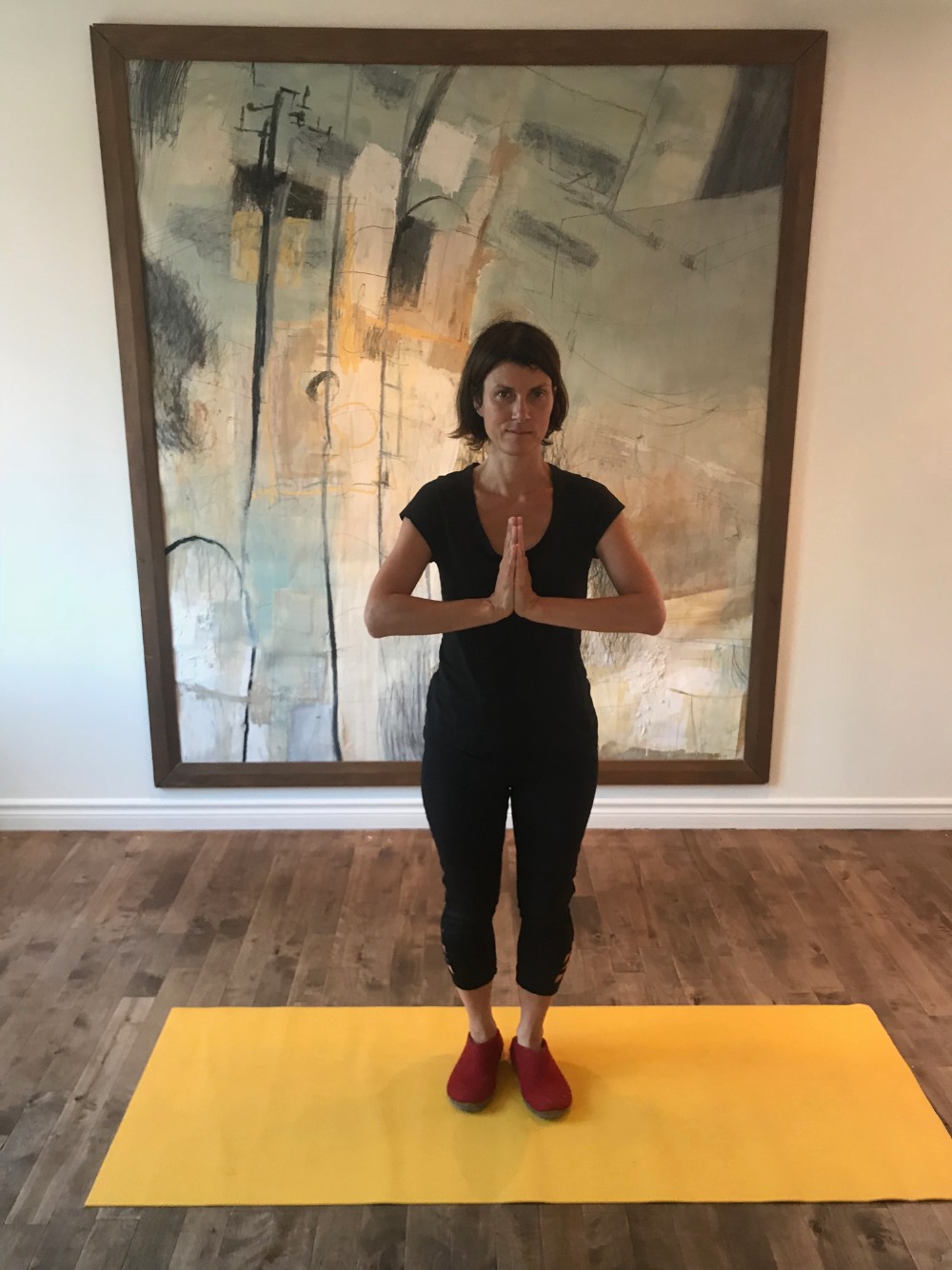
Additional Tips for Hands & Wrists
- Grey clay (locally applied as a poultice)
- Castor oil compresses
- Rehabilitation of any injury: Arnica Montana 30 CH
- Fracture: symphytum 30 CH
- If you have recently injured yourself and still have range of motion, we suggest icing the irritated area.
- For muscle pain/strain use the following essential oils in a carrier oil (coconut or other oil): 6 drops lavender, 2 drops rosemary, 2 drops clary sage, 1 drop chamomile, 6 drops marjoram, 2 drops lemongrass.
Back Pain
UPPER BACK
Stretch 1
Standing or seated, cross both arms and rest hands on opposite shoulders while drawing chin towards your chest. It sends the breath to the upper and middle back, thus releasing tension along this area. Take 10-15 breaths then inhale and lift head back up and release arms by your sides.
Stretch 2
“T”,”Y”, “I” exercise: Stand with your back against the wall, feet hip width apart and shoulders relaxed. Begin raising arms laterally with back of the hands to the wall and come to a “T” arm position. Take a few breaths here, then continue raising arms into a “Y” position and then finally “I”. Always keeping shoulders relaxed away from the ears and back of the hands, elbows and shoulder blades against the wall. Slowly release arms down beside the body.
Stretch 3
Seated on a chair, fold forward to go grab the 2 legs of the chair making sure to cross your arms. Then, keeping the hands stable, as you exhale, activate the arms as though you pull upwards. Keep the head, face and jaw relaxed. Hold the stretch for 5-10 breaths and then press into your feet, inhale to raise the torso back up. If feeling dizzy, press above your upper lip with your index finger.
LOWER BACK
Stretch 1
Lying down, draw the knees in towards the chest and try to keep the sacrum bone (the triangular bone at the bottom of your spine, located between the buttocks muscles) down onto the floor. Hold for 15-20 breaths.

Stretch 2
Dandasana (staff pose) with your spine extended, interlace all 10 fingers and lift arms up over head with palms facing up. Take 10-15 breaths, then release.
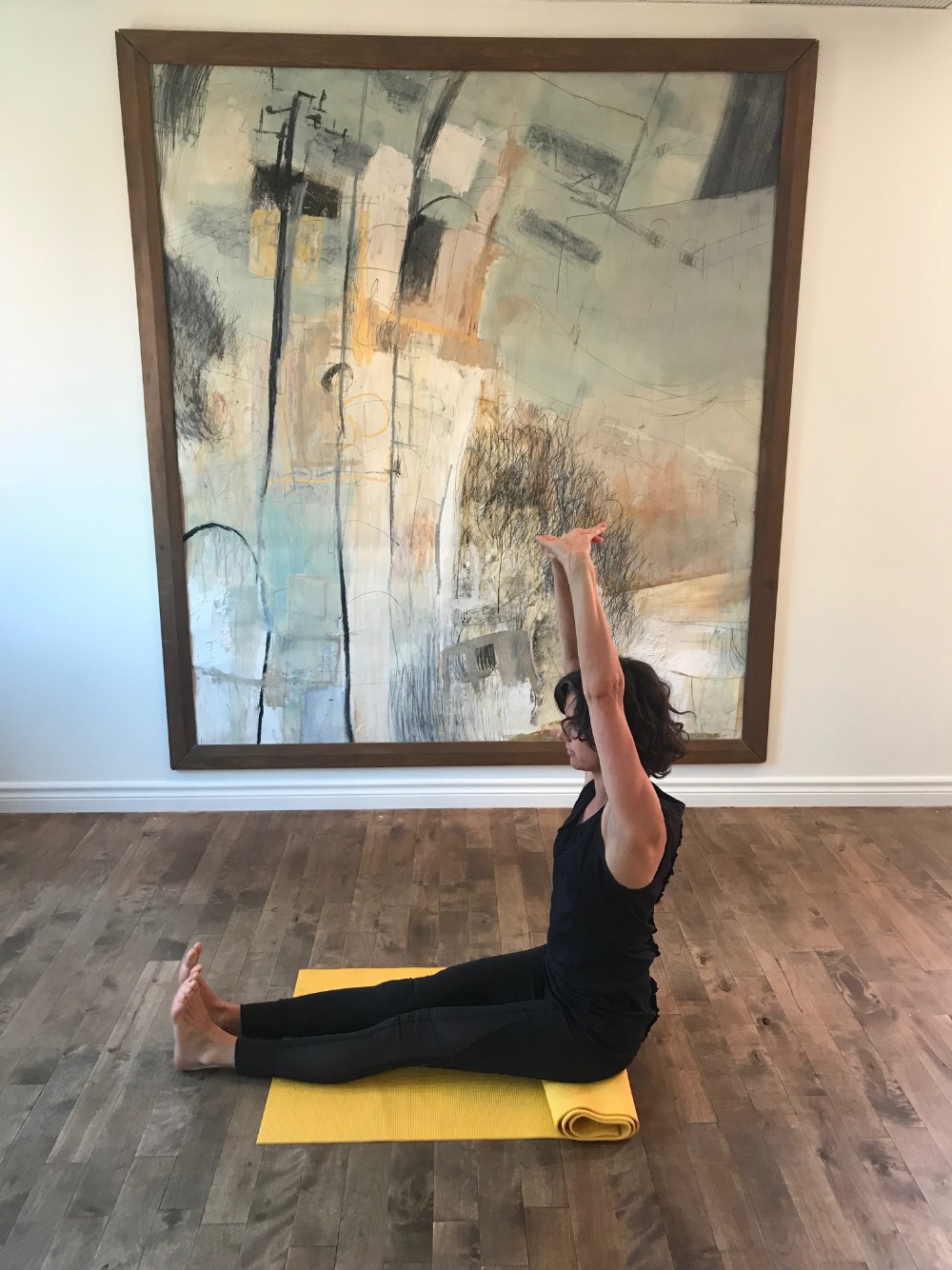
Stretch 3
Constructive rest pose. Lying down with knees bent, feet flat and hip width apart with toes pointed forward. Adjust the distance between your feet and your hips so that you feel equal weight in the front and back of the feet. Align your head so your forehead tilts slightly downward towards your chest. Breath here for 5-10 minutes.
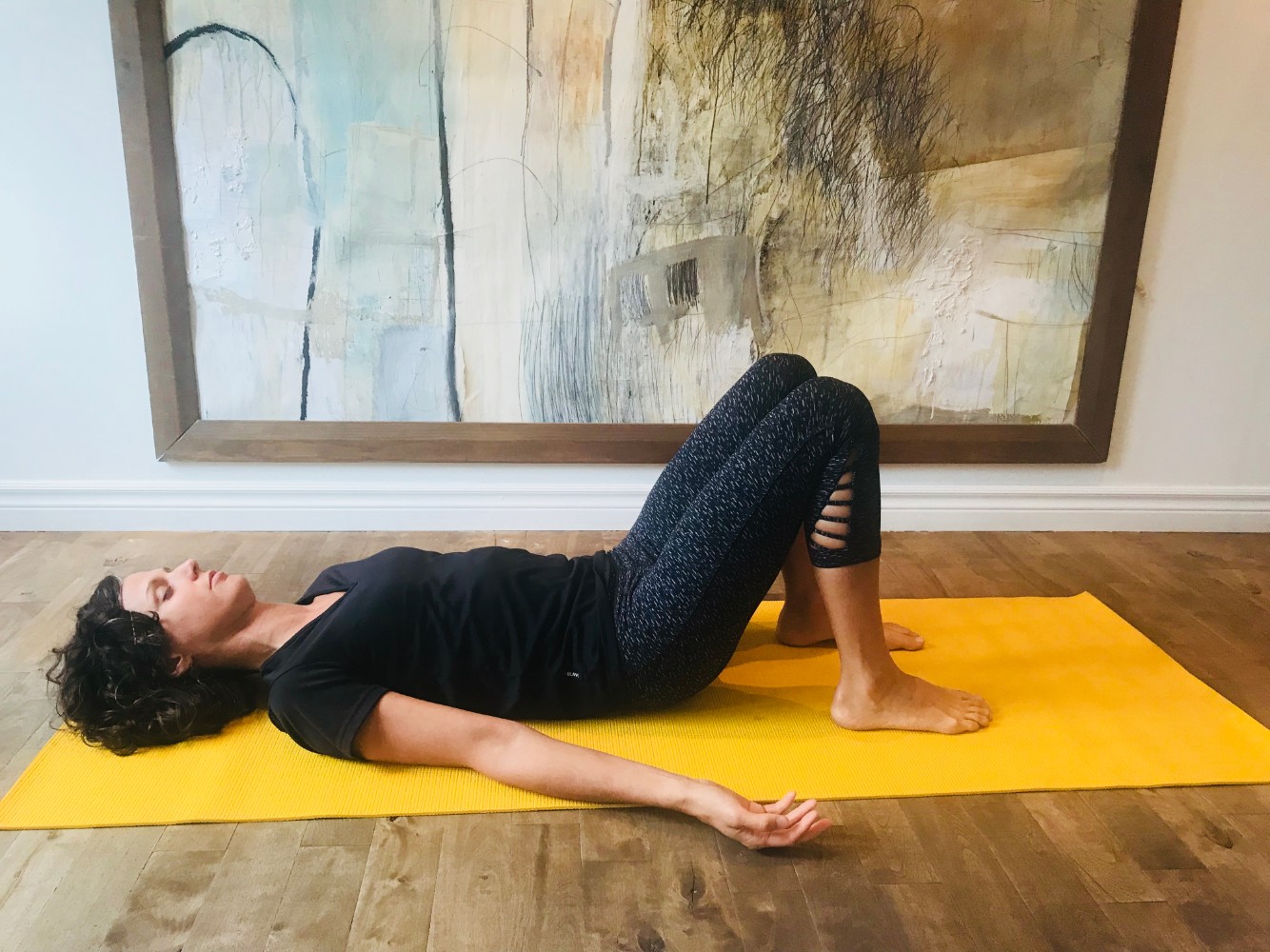
Stretch 4
Gentle spinal twist. Lying down with knees bent, press into your feet to lift the pelvis up and shift your hips to the left then lower them back down. From there, open your arm out to the sides, palms facing down and then exhale as you lower both bent legs towards the right. Hold for 5-10 breaths and then inhale to left both legs towards the center. Lift the pelvis and bring it back in alignment with your spine. Repeat on the other side.

Stretch 5
Lying down, draw the knees in towards the chest and try to keep the sacrum bone (the triangular bone at the bottom of your spine, located between the buttocks muscles) down onto the floor. Hold for 15-20 breaths.
Stretch 6
Squat for 15-20 breaths (may be done with back against the wall).
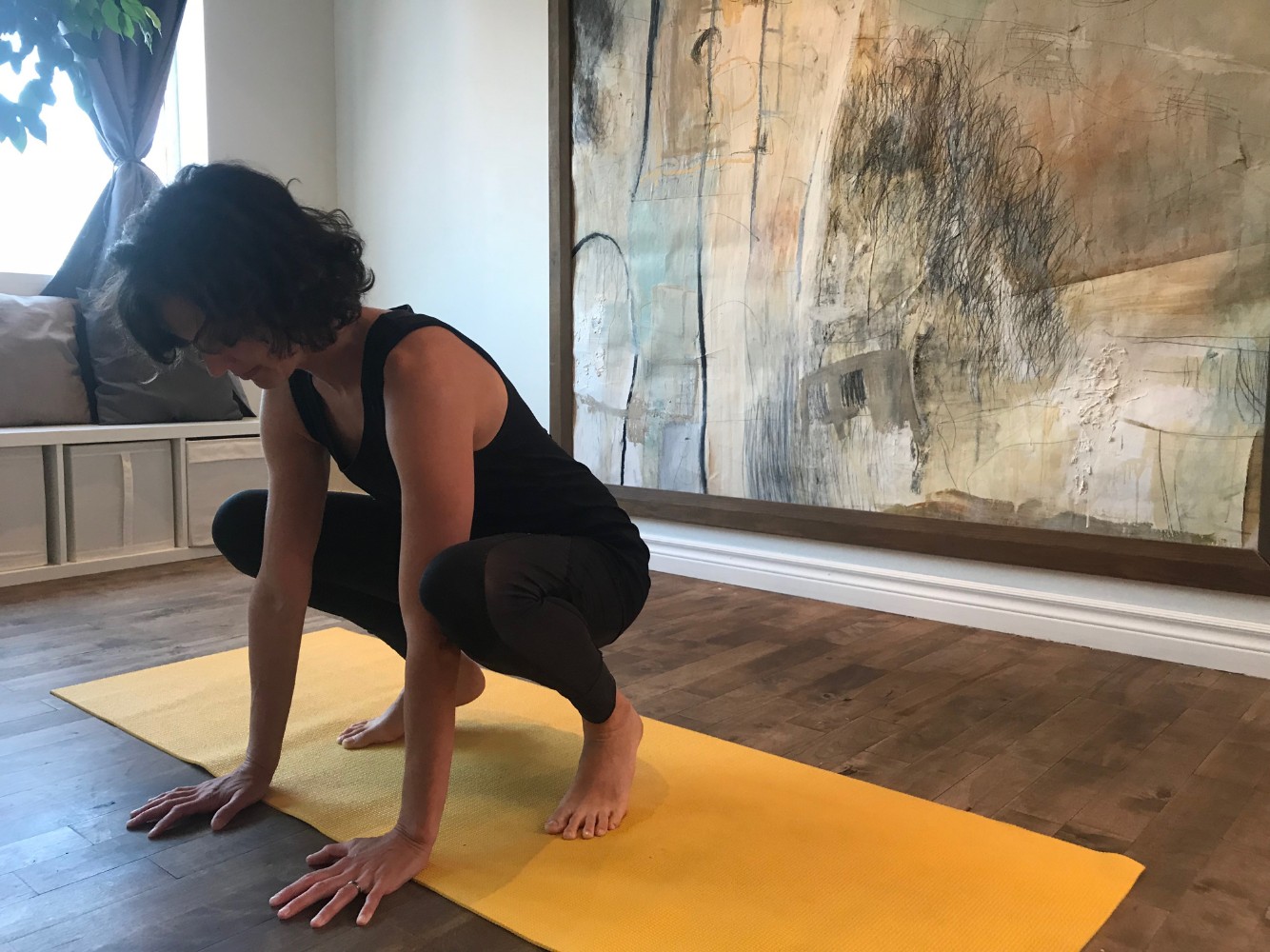
Stretch 7
Child’s pose, 15-20 breaths.
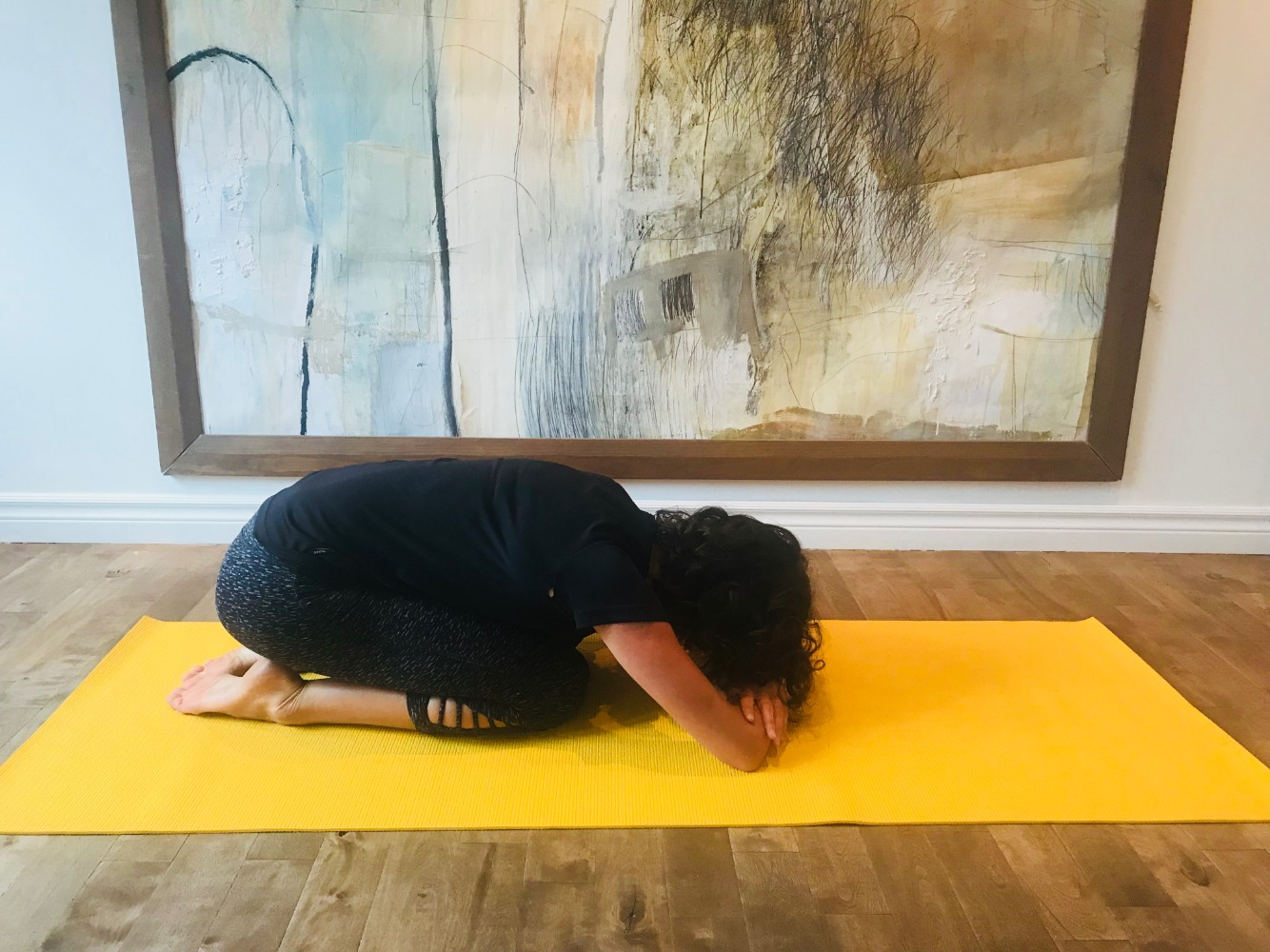
Additional Tips for Back
- Grey clay (locally applied as a poultice)
- Castor oil compresses
- Rehabilitation of any injury: Arnica Montana 30 CH
- Fracture: symphytum 30 CH
- If you have recently injured yourself and still have range of motion, we suggest icing the irritated area.
- For muscle pain/strain use the following essential oils in a carrier oil (coconut or other oil): 6 drops lavender, 2 drops rosemary, 2 drops clary sage, 1 drop chamomile, 6 drops marjoram, 2 drops lemongrass.
Neck Pain
Stretch 1
Lying down with bent knees and feet hip width apart, roll head from side to side: exhale, roll head to the side, inhale and roll head back to neutral. Repeat 5-10x/side.
Stretch 2
Standing or seated, laterally tilt head (bring one ear closer to that shoulder. Take 5 breaths then switch sides.
Stretch 3
Standing, grab the right wrist with the left hand and draw the left arm down and towards the midline of the body as you tilt your head to the left. 5-10 breaths/side.
Stretch 4
Standing or seated, tuck chin in (as in making a double chin) and lift crown of head up as you keep shoulders relaxed. 5-10 breaths.

Additional Tips for Neck
- Grey clay (locally applied as a poultice)
- Castor oil compresses
- Rehabilitation of any injury: Arnica Montana 30 CH
- Fracture: symphytum 30 CH
- If you have recently injured yourself and still have range of motion, we suggest icing the irritated area.
- For muscle pain/strain use the following essential oils in a carrier oil (coconut or other oil): 6 drops lavender, 2 drops rosemary, 2 drops clary sage, 1 drop chamomile, 6 drops marjoram, 2 drops lemongrass.
Legs & Feet
Stretch 1
Standing with one hand on a support for balance, lift 1 foot off the floor and rotate the ankle 12x to the right and 12x to the left. Then switch sides.
Stretch 2
Stand facing the wall with the toes of one foot onto the wall at a height where a comfortable stretch is felt. Hold 5-10 breaths then change sides.
Stretch 3
Stand facing the wall with the dorsal part of 1 foot onto the ground. Slowly rock that foot to the right and to the left as in massaging the dorsal part of that foot for 5-10 breaths and then switch sides.
Stretch 4
Lying down with both knees bent, lift one thigh vertical and start extending the lower leg, drawing to heel towards the ceiling and your toes towards your head. Hold for 10-15 breaths and then release and switch sides.

Stretch 5
Lunge, 10-15 breaths on each side.
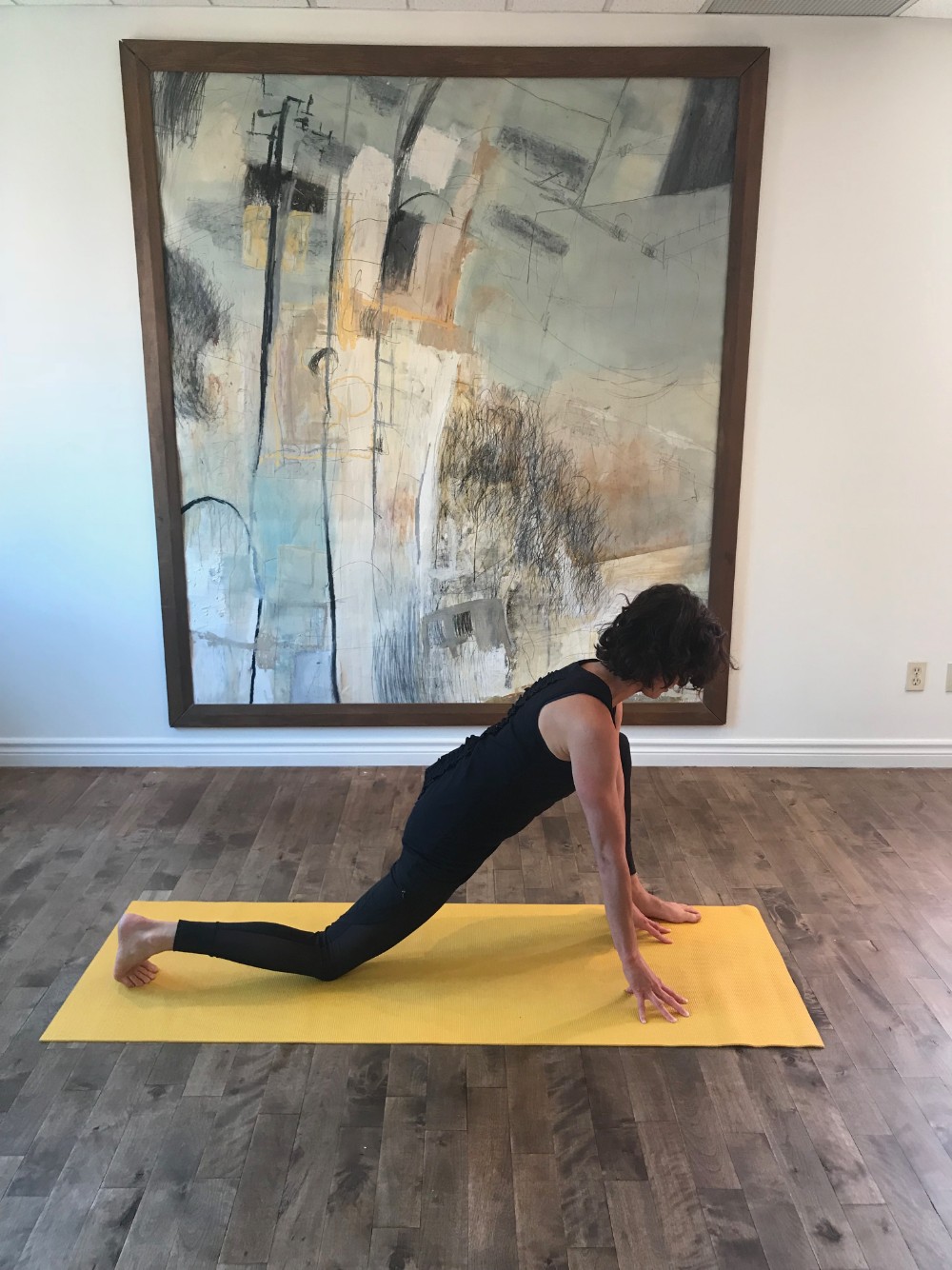
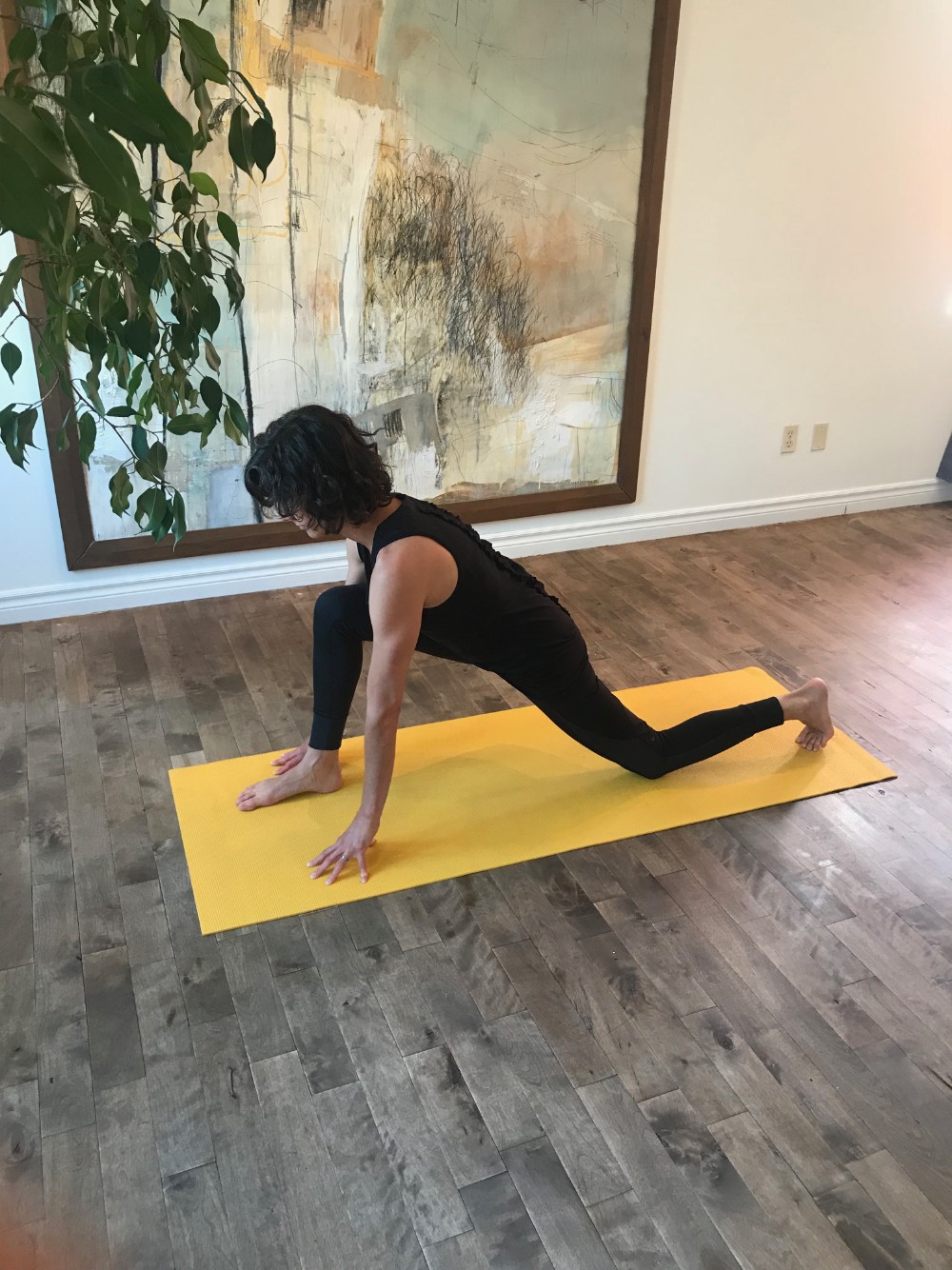
Stretch 6
Standing with your hand on a support for balance. Keeping a long extended spine and a neutral pelvis, bend one leg and draw your heel towards your buttock. Hold for 10-15 breaths and then switch sides.
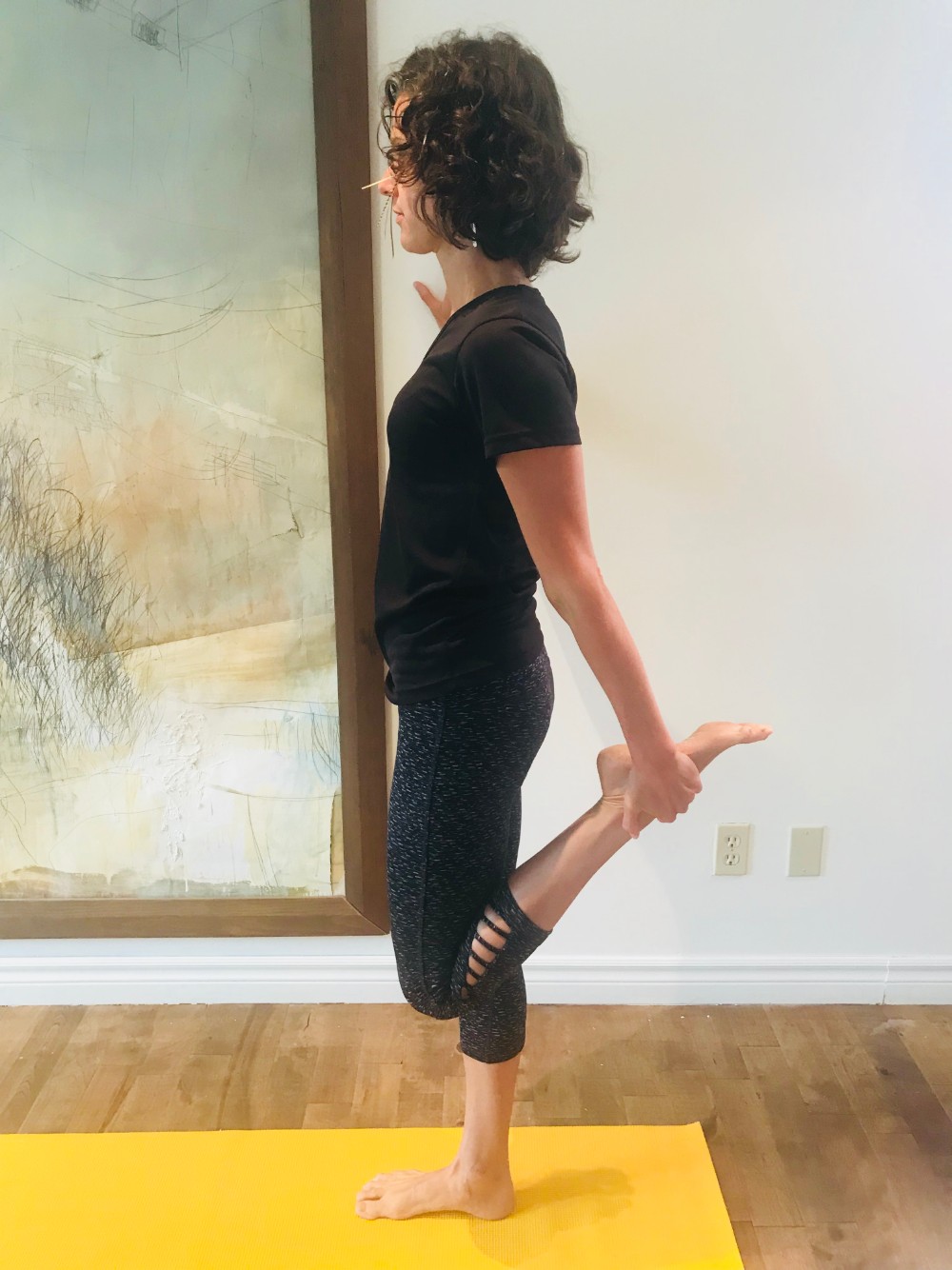
Pre/Post Operation
Tips to Help With Pre/Post Operation
- The following essential oils boost immunity: lavender, tea tree, chamomile, eucalyptus, rosemary, peppermint, frankincense, lemongrass, sandalwood.
- Drink one tablespoon of digestible aloe vera gel in a smoothie or in water each day.
- 3 granules of arnica 3 times a day – 1 day before and 1 day after the operation.
- Post operation : fish oils and omega 3s.
Insomnia
Tips to Help With Insomnia
Sleep Hygiene
- Stick to a regular bedtime and rising time.
- Get lots of daylight, but avoid bright light before bedtime.
- Unplug wifi router at night to reduce EMF exposure.
- Use your bed only for sleeping or intimacy and lovemaking.
- Don’t nap during the day unless it’s absolutely necessary. Restrict your nap to 15 to 20 minutes in the early afternoon.
- Move your body: Build up to 30 to 45 minutes of moderate exercise nearly every day; Get your exercise early in the day, and then try some stretching or yoga to relax your muscles and your mind in the evening.
- Wind down late in the day. Schedule the more stressful or demanding tasks early and less challenging activities later.
- Avoid using computers, smartphones, tablets, TV or other technological devices at least an hour before bedtime.
- Be sure your bed is comfortable and your bedroom is dark and quiet.
- Keep your bedroom dark or use a sleep mask.
- Keep your bedroom at a comfortable temperature.
- Take a shower at night. Body temperature plays an important part in regulating the circadian rhythm, which tells the body when to feel sleepy or alert. If you don’t want to take a shower, you can simply take a warm foot bath with sea salt.
- If you can’t sleep after 15 to 20 minutes, get out of bed and go into another room. Read quietly with a dim light. When you feel sleepy, get back into bed — but don’t delay your scheduled awaking time to compensate for lost sleep.
Fuel Your Body
- Eat foods high in tryptophan such as spinach, nuts and seeds.
- Drink teas: chamomile, valerian tea, skullcap along with motherwort, chamomile, licorice root, catnip brews (consume 3 hours before bed).
- Magnesium helps relax the body. To include this in your diet: eat green leafy vegetables, nuts and seeds, legumes and vegetables.
- Eat foods high in potassium, such as bananas, sweet potatoes, lima beans and papaya.
- B complex vitamins but only in the morning.
- Ashwaganda root powder, consume one tablespoon in warm water or smoothie.
- Avoid stimulants, such as caffeine and foods rich in vitamin C before bed.
- Try to avoid all beverages after dinner if you find yourself getting up at night to urinate. If you enjoy a bedtime snack, keep it bland and light.
- Avoid alcohol after dinnertime; although many people think of it as a sedative, alcohol can actually impair the quality of sleep.
- Don’t eat large meals in the evening.
Relax Your Mind
- Establish a regular bedtime routine.
- Use essential oils: 6 drops of lavender, 4 ylang ylang, 2 clary sage, 1 chamomile in a carrier oil or diffuser.
- Do a body scan, contract your muscles and release.
- Warm Bath (Epsom salts) or shower.
- Try our meditation (put link).
- Play brainwave music such as binaural beats.
- Above all, don’t worry about sleep. Watching the clock never helps. Except when keeping a sleep diary, don’t keep track of the amount of time you spend trying to sleep. Instead, just rest quietly and peacefully. Try not to lie in bed reviewing your problems and plans. If you really are overloaded, get out of bed and make a list, then return to bed and think of something relaxing and pleasant.
Headaches & Migraines
Tips to Help With Headaches and Migraines
- Massage peppermint essential oil on the temples, but ensure it is diluted with water
- Feverfew
- Magnesium
- Drink lots of water
Digestive Disorders
Tips to Help With Digestive Disorders
- Ginger (tea)
- Enzymes digestives
- Apple cider vinegar
- Fennel seeds
Skin Issues
Tips to Help With Skin Issues
- Drink lots of water
- Make sure you are getting all of the vitamins and minerals required by the body
- Use a non-comedogenic oil to clean the skin such as argan oil or hemp seed oil
- Use Jojoba oil for acne and rose hip seed oil for scaring
- Omega 3
- Evening primrose oil (capsules)
- Digestive enzymes
- Zinc
- Vitamin A
Books
Weight Management
Prenatal & Postnatal
Tips to Help With Prenatal & Postnatal
- Red raspberry leaf tea to help with milk production.
- Aloe Vera gel (digestible format) to help with the healing process.
- Sleep when your baby sleeps and try not to do too much.
Books
Postpartum Depression
Birthing Centers
Menopause
Tips to Help With Menopause
- Evening primrose oil (capsules) is a gentle way to help with balancing hormones
- Ensure you get enough omega 3s
- Vitex (plant)
- Wild yam
Seasonal Support
SPRING
Good bye winter stagnation and welcome to the refreshing spring time. Below are a couple of tips to help you during this creative period.
1. Wake up and stretch – Rising earlier and beginning a healthy morning routine of walking or stretching will help alert your brain that it’s time to wake up. As you set your internal clock to the sun, you will be better able to use your energy during the day and rest more soundly at night. In traditional chinese medicine they say the liver stores blood during periods of rest and then releases it to the tendons in times of activity, maintaining tendon health and flexibility. Try a gentle routine of yoga or tai chi moves.
2. Get outside and move – The liver is easy to stagnate in the spring. Fresh air, and outdoor activities of all kinds can keep liver Qi flowing. Especially if you have been feeling irritable, find tranquility in nature by taking a hike or walking through a park to smooth out that liver Qi and move stagnation.
3. Taste sour – Foods and drinks with sour tastes stimulate the liver Qi. Put lemon slices in your drinking water, use vinegar and olive oil for your salad dressing or garnish your sandwich with a slice of dill pickle. It has a contracting, astringent effect and dries and firms. A small amount of the sour flavor is essential for a balanced liver, but be careful not to consume too much or it may cause dryness.
4. Breath easy – You can get into the habit of cleansing of the sinuses with a neti pot/inhalation therapy and consuming raw, local honey. Honey nourishes, moistens and lubricates the intestines. A warm glass of water with a tablespoon of honey is a soothing way to start your day, add some fresh squeezed lemon juice and it’s the perfect spring tonic.
5. Rest your digestion – A good way to cleanse and prepare for renewal is by reducing consumption. Our naturopath can guide you on the best way to do a balanced and healthy cleanse.
6. Eat green – Green is the color of the liver and of springtime. Eating young plants like fresh, leafy greens, sprouts, and immature cereal grasses can improve the liver’s overall functions and aid in the movement of Qi.
7. Try lymphatic massage – This gentle form of massage helps the body’s lymphatic system rev up while strengthening the immune system and increasing white blood cell count Dry brushing your skin is one easy way to slough off winter’s dead skin and stimulate lymph drainage revealing a more vibrant glow to your skin. Our body’s largest organ should look and feel good.
8. Plant some seeds – Activities for grounding and nurturing like planting in the spring can have a soothing effect on the mind and help anchor any rising Liver energy. Start planting seeds inside now or outside around the middle of May. Think you don’t have green thumb? Cultivating a windowsill herb garden requires little to no gardening skills and it’s a handy way to add fresh flavors to your meals. Veggies like kale, leafy greens and some flower bulbs actually prefer the cooler temperatures to early spring so don’t shy away from planting outside especially if there is no frost on the ground.
Garlic Toasted Quinoa with Vegetables
Makes 2 generous servings
- 1 cup quinoa, rinsed
- 4 cloves garlic, diced
- 5 tablespoons olive oil
- 2 cups vegetable broth or water
- 1 bay leaf
- 1 bunch spinach or baby chard, rinsed and chopped
- 1 bunch asparagus, washed and chopped, with woody ends removed
- 10 shiitake mushrooms, sliced
- 1/4 cup slivered almonds
- 1 tablespoon soy sauce
Sauté garlic in 2 tablespoons oil in a large pot over high heat for 2 minutes or until tender. Add quinoa and another tablespoon of oil to coat the quinoa. Reduce heat to medium and toast, stirring constantly, until the quinoa turns brown (about 10 minutes).
Add the broth or water and bay leaf, and bring to a boil. Reduce heat, cover and simmer for 15 minutes (until liquid is absorbed).
While the quinoa is cooking, sauté the mushrooms in remaining 2 tablespoons of oil until soft. Add asparagus and cook until just tender. Add the greens and cook until wilted. Remove bay leaf and add the mushroom and greens to the quinoa. Add the almonds, and stir well to combine. Season with the soy sauce.
SUMMER
Season of Abundance
This season is a great time for you to concentrate on rebuilding the energy consumed during the winter and spring months. As summer activities can sometimes appropriate your relaxation and meditative time, make sure to find a balance between action and being, between social events and time to be in your garden, or relax in your hammock, and allow the earth to nourish you and recharge your battery pack.
Foods for Summer
- Increase foods with yin qualities (wet, cooling) — fruits are the most yin followed by vegetables.
- Reduce yang foods which are the more concentrated, heating ones such as proteins (meat and fish, nuts, seeds, beans), fats (dairy products, eggs) and complex carbohydrates (whole grains).
- So during the summer eat lots of fresh fruits and juices, multicoloured salads and vegetables, some seeds, nuts and grains and fewer dairy products and meat.
- Fresh fruits and juices such as apples, watermelon, bananas, strawberries, pears, peaches, plums and citrus fruits such as lemons and limes.
- Fresh vegetables such as cabbage, carrots, celery, avocado, seaweeds, spinach, cucumber, tomatoes, summer squash, broccoli, corn, Chinese yam, bitter gourd, pumpkin.
- Sprouts especially mung, soy and alfalfa. Beans such as mung beans.
- Aim for a rainbow of colours on your plate and an abundant variety of foods.
- Cook lightly and regularly add a little spicy, pungent or even fiery flavour such as red and green hot peppers, cayenne red pepper, fresh ginger, horseradish, black pepper, peppermint and coriander.
- Steam or simmer foods as quickly as possible.
- Use little salt and more water.
- To be more comfortable, drink hot liquids and take warm showers to induce sudden sweating and to cool the body.
- Drink flower and leaf teas including chrysanthemum, mint and chamomile.
- Avoid iced drinks and ice cream as they cause the stomach to contract thereby interfering with digestion.
- On hotter days, avoid heavy foods such as meats, eggs and too many nuts, seeds and grains as these cause sluggishness.
- Try to drink eight glasses of water a day, more if you will be out in the sun, and refrain from adding too much ice. Drinking ice-cold water may seem particularly tempting on a hot day, but it causes your body to have to use more energy to match the liquid within your body to your body’s natural temperature. Your body is already harboring too much energy from the heat and activity of the season. Take it easy on your body and help keep it balanced by trying to drink water without ice.
Feeling Lethargic
A fire deficiency is often characterized by a lack of activity. In this case, it’s important to eat heating foods like peppers, ginger, citrus, butter, meats, corn, cherries and basmati rice.
Too Much Energy
When fire is in excess, it often results in overexcitement, too much involvement and being overcommitted. It is suggested to eat bitter foods like romaine lettuce, dandelion greens, almonds and scallions, and cooling foods like cucumber, sprouts, watermelon, apples, lemons and limes. Avoid heavy foods like meats, eggs and oils.
Five Food Rules
Here are some tips on eating wisely:
- Chew your food very well. This makes it easier for your enzymes to break food down into the energy needed to keep the body going.
- When eating, stop when you are seven tenths full emphases the importance of moderation. Stop eating before you are completely full. This enhances the digestion and won’t overload the liver and kidneys’ ability to process waste products.
- Eat in a quiet, non-stressful environment. Make the dinner hour a special time with no television, phone calls or other loud distractions. Sit down to eat and make a rule to discuss only pleasant topics.
- Finish your last meal of the day at least three hours before bedtime. This prevents stress on the liver along with digestive problems like heartburn and acid reflux.
- Eat a diet of primarily lightly cooked foods, especially if you have weak digestion. Cooking allows easier assimilation of nutrients.
Exercise
Summer is the best time to do vigorous exercise if the weather is not too hot, avoiding the peak hours of the summer heat 10am to 2pm (so best done in the early morning) — at least 1 hour a day to include 30 minutes of cardiovascular exercise that promotes sweating (eg running, swimming, tennis, cycling), 15 minutes of mild exercise (walking,) and 15 minutes of stretching.
Also, while doing daily activities, such as working outdoors or exercising, take breaks in the shade every hour to cool down your body.
AUTUMN
Autumn is our transition from the sweet abundance of summer to the bare darkness of winter. Autumn in general is a good time to cleanse the intestine. Look at your diet and eliminate unsupportive foods. Perhaps follow a simple detox cleanse. If you feel a cold coming on, a good way to “kick it out”, is to open the pores to expel the pathogen. Eating pungent foods, particularly ginger and garlic, will help a person to sweat and cleanse the body. Note, however, that spicy food is a cure, not a prevention. Eat it at the onset of a cold, not as a daily diet during autumn. Autumn in general is a good time to cleanse the intestine. Look at your diet and eliminate unsupportive foods. Perhaps follow a simple detox cleanse. We do have herbal detoxes at Spa Vert. On another level, it might be the perfect time to clean your house, getting rid of what is no longer of value. No one would dream of asking the trees to hold onto their leaves. Yet people will clutter their home to such an extent that they don’t even know how to find the things that are important to them.
Steps You Can Take Day to Day
- Increase your exercise or any activity that increases breath. Even your daily commute can turn into a workout. Once you get into the habit of deep breathing you can drive along, radio and cell phone off, breathing deeply and paying attention to your driving and your surroundings.
- Hydrate — drink lots of water, and wean yourself from dehydrating fluids such as coffee, black tea and alcohol.
- Eat foods that are contracting and astringing, as this will match the seasonal change to go inward, eventually leading to winter. Such foods are often sour: pickles, sauerkraut, vinegar, lemons, limes and grapefruit. Other such foods are aduki beans, yogurt, some plums and apples, even rose hip tea. To combat the dryness add, millet, sweet potatoes and yams, seaweeds, almonds, pine nuts, eggs, crab, oyster, mussels, and again apples, persimmons, pears, and loquats.
- Set aside time to meditate. This can better come about after eliminating the clutter of too many activities from your calendar.
- In general, think “less is better.” Let the simple unclutteredness of autumn feed the soul.
WINTER
Winter is a beautiful time of year that’s perfect for rejuvenating ourselves quietly while we prepare for the spring season. Winter can also be a perfect time to get sick, mainly because most of us resist changing our routine to accommodate the season’s demands like slowing down and getting more rest. Here are some tips to survive the winter months and enjoy its magic:
Winter Foods
In winter we need to eat foods to create warmth and support the Kidneys. Energetically warm foods include anchovies, bay leaves, chestnuts, chicken, coriander, fennel, leek, mussels, mutton, nutmeg, pine nuts, rosemary, spring onions, sweet potatoes and walnuts. Preparation of food can also add to the warming nature like stewing and slow cooking.
Helping Herbs
In winter, warm pungent herbs such as rosemary, shallots, garlic, onions, cinnamon cloves, black pepper, ginger, fennel, anise, dill and horseradish all help to remove cold.
When you feel like you are getting a common cold, try fresh ginger boiled in water with the white ends of two spring onion stalks. Boil for ten minutes to make a warming broth to give you energy and dispel the cold and wind.
Helpful Winter Practices
- Rub your ears for five minutes every day: because the ears are the sensory organ connected to the Kidney, stimulating and warming them can greatly enhance your Kidney and overall health.
- March in place: using flat, heavy feet, slowly stomp as if walking slowly in place for 4-5 minutes to stimulate the Kidney meridians, which begin in the soles of your feet.
- Take a break! The best thing you can do is follow nature at this time by resting—keep emotional and physical activities to a minimum. Do restorative yoga, with qi gong.
- So stay warm and ensure your neck is always covered, keep hydrated and nourished and try to give yourself the extra time and space to slow down, rest and meditate in this profound season of stillness.
Food for Radiance
- Wild salmon and shrimp – Omega-3 fatty acids fight inflammation and regulate brain chemistry.
- Cherry tomatoes and watermelon – Lycopene prevents the formation of inflammatory components associated with depression.
- Chilli peppers – Capsaicin reduces inflammation throughout the body, including the brain.
- Beets, spinach, beans and lentils – They provide the folates needed to support good mood and cognitive health.
- Garlic – Contains chromium and other components that act as natural antidepressants.
- Fruit and vegetables – A high intake of fruit and vegetables is associated with increased psychological well-being.
Self Support
Self Worth
With the ballpoint pen, carve a circle on each candle and make a dot in the center of the circle. This is the astrological symbol for the sun. Yellow, the sun’s color, is also the color associated with the solar plexus chakra. Rub almond oil on the candles to dress them, and then position them in their holders. Dab a little almond oil on your solar plexus, too, to energize it.
Place the four candles at the four cardinal directions and stand at the center of the space you’ve defined. Starting at the east, move clockwise as you light the candles, making sure you’ll be inside the circle when you’ve finished. After you’ve lit all four candles, spend a few minutes drawing the fire energy from the candles into yourself. Inhale the scent of almond oil and imagine a golden-yellow ball of light glowing in your solar plexus. Let this light expand until it fills your whole body with warmth and confidence.
Pinch your right nostril shut, inhale through the left, and hold to the count of ten. Release, and exhale through the right nostril. Repeat this five times, then switch sides. As you do this alternate nostril breathing, sense your power growing.
Spend as much time as you like in the circle of candlelight. When you’re ready, extinguish the candles in reverse order from the direction you lit them and leave the circle.
Chakra Balancing Ritual
To do this ritual, you only need your imagination and willpower. Healers link each of the chakras with a color – it’s sort of like having a rainbow running through your body.
- First (root) chakra: Red
- Second (sacral) chakra: Orange
- Third (solar plexus) chakra: Yellow
- Fourth (heart) chakra: Green
- Fifth (throat) chakra: Blue
- Sixth (brow or third eye) chakra: Indigo
- Seventh (crown) chakra: Purple
Sit in a quiet, comfortable place and breathe slowly, deeply. Focus your attention on the first chakra, and send beautiful, clear red light there. Do this for a minute or two, until you feel warmth at this energy center. Then shift your attention to the second chakra and focus orange light there. Repeat, moving up through your body, sending the appropriate-colored light to each chakra. By the time you reach the top of your head, you’ll feel more relaxed and balanced in body, mind and spirit. Try to do this every day to maintain personal harmony and well-being.
Surrendering to Your Life
The intention of this ritual is to accept all that as happened to you so far, and to begin to see your life as a whole.
Time: 1-2 hours; this can be split into two sections
- You will need: Journal, paper and pen, a large piece of paper (or art paper or cardboard) for the mandala
- Objects for a mandala – appropriate art materials if you are going to draw; personal and/or found objects if you are creating a tridimensional mandala (further instructions below)
Part 1: Saying Yes
Good or bad, excruciating or ecstatic, the experiences you’ve had so far in your life are what have formed you. By accepting them, acknowledging them and then studying them you can be released to continue your journey.
It’s often said that the only thing you can change is your own mind; or that the one choice you always have is how you interpret what happens to you. This ritual is designed to give you some freedom from, and acceptance from your past. Journeying to the Dark Goddess we cannot take anything with us and anything we try to take will only slow us down. And – perversely – we seem much more willing to leave behind – or to let go of – happy experiences than unhappy ones. Seeing all of your past as meaningful, and having shaped who you are will assist your path into the Underworld and towards meeting the Dark Goddess.
- On two pages of your journal – or two loose sheets of paper – divide each page into two columns. Label the columns on the first page Positive Events and Acceptance of Positive. Label the columns on the second page Difficult Events and Acceptance of Difficult.
- In the column Positive Events write down all the wonderful things that have happened to you in your life (or as many as you can fit in!) These didn’t have to be in chronological order – just however they come to you. They might include the circumstances of your birth; your childhood and education; your gifts and talents; characteristic or values you embody; significant relationships; experiences and understandings. You don’t need to describe them, just list them.
Sometimes people have difficulty recognizing what is good in their lives; particularly when they are in a very bleak place. If this is happening to you, imagine you are someone else, looking at your life. What would this other person say were some of the wonderful things in your life? Maybe it’s the culture and time you were born into; maybe it’s the intellect, sense of humor or deep understanding; maybe it’s that wonderful connection you had with your teachers at school; your joy in dancing; the children you’ve loved.
Do not progress with this exercise until you have managed to fill up this column with wonderful experiences and events in your life, even if you have to put this exercise down and continue another day, or ask someone else for help. Only when you have completed this first column you should continue.
- In the column Negative Events write down all the difficult, painful and awful things that have happened to you in your life (at least the most significant ones). These could include illnesses; periods of unemployment or uncertainty; relationship break ups; losses and deaths; addictions; accidents; personality traits you’re not proud; or things you were born with, or born into. Once again, they don’t have to be in chronological order, or order of importance and you don’t need to describe them in any way. Just list them. If you are having difficulty finding things to write in this column, you might imagine what someone else would say about your life.
- The column Acceptance of Positive is for you to record your acceptance of each of the wonderful things in your life on your list; regardless of whether they are due to luck, merit, hard work or someone else’s love for you. Read the first item on your list and spend a moment taking it in and feeling what it means to have, or to have had, that in your life. Reach out to it with a deep acceptance and when you feel that acceptance, write YES in the Acceptance of Positive column, next to that item.
- Move onto the second item and deal with it the same way. Follow through with all the items on this list.
- Now look at the column called Acceptance of Difficulty. It is for you to record your acceptance of the difficult and painful things in your life you have listed; regardless of whether they are due to bad luck, circumstance, your lack of effort or ability or someone else’s actions. Read the first item on your list and spend a moment really taking it in, feeling what it means to have, or to have had, that in your life. Reach out to it with a deep acceptance – you do not have to accept that it was good to have this in your life, but just acknowledge that you DID or DO have it in your life. When you feel acceptance, write YES in the Acceptance of Difficulty column, next to that item.
- Move onto the second item and deal with the same way. Follow through with all the items on this list.
There may be some items on the list you have some hard time writing YES next to. Remember you are not being asked to accept the value or merit of those things – simply that they are (or were) a part of your life. Writing YES next to them does not signal your approval, simply your acknowledgement that these things are included in the total of your life, with all their pain, difficulty, grief and disruption.
When we accept what is real and what has happened, we are able to integrate it. While we still seek to deny or hide from it, it’s as if we are stuck there, staring at that very thing we most hate. Try it. If need be, you can refer back to your first list. Seeing the fullness and beauty listed there, you may be able to better acknowledge that hard things come into all our lives, but they do not negate the power or truth of wonderful things.
Part 2: Seeing the Whole: Making the Mandala
A mandala is a design, usually circular and often geometrical or repetitive (but not always). It symbolizes the universe, or the whole. Mandalas visually represent your interpretation of a topic. They can be entirely free-form but they often begin with a structure, (such as dividing the circle into a certain number of segments), which is then filled in.
Making mandalas, and later contemplating them can be a method of meditation, enquiry and reaching towards divisions. Mandalas are a way of both distilling and encrypting information (which can be feelings or thoughts) so that you can see more deeply into yourself. It is amazing how something you yourself created yourself can teach you so much about how you think and your own experience. Creating mandalas you concentrate mainly on the details; in looking at them afterwards, you see the whole and that whole can be quite startling.
Anyone can create an mandala. The simplest way is to draw a circle – at least on a letter piece of paper, but larger if you have one – and divide it into sections. The number and placement of sections will be relevant to the topic of your mandala. If you wanted to create a mandala representing light and dark it might simply have a line drawn through the middle, horizontally. If you wished to create one representing the seasons you would divide it into four quarters. A more mutable design might be the phases of the moon and you might choose to make the lines out from the center curved, rather than straight, to represent the curving edge of the moon. The number of segments would depend on whether you choose to depict the moon’s cycle as four phases, nine phases or twenty-eight.
There’s another way to create a mandala and that is a 3D mandala. I’ve often done this outside; on the beach; in the garden or in the forest using found or brought objects. On the beach I draw out the circle and the dividing lines, and fill the sections with sand sculpture (usually abstract) and shells, seaweed, feathers – whatever you can find. In the forest I might use sticks as dividers for the circle (or you can use rocks whatever you can find) and place a blanket of leaves over the whole perhaps arranged by gradation of color or by type. I might add only a few objects – maybe seedpods or flowers. In the garden I’ve made mandalas with food – spaghetti is great for dividing the segments – and I use lentils, split peas, pasta, rice and other grains to fill in the mandala, you can place flowers, cut fruit and candles into the mandala. I then leave this – apart from the candles – for the birds and animal as an offering.
You can also create a 3D mandala inside, on your altar for instance. Divide the altar into the appropriate number of segments – these could even be on different levels, depending on the structure of your altar – and then place meaningful objects into each section. If you do construct one of these 3D altars, considering taking a photo of it before you leave it or dismantle it. You can paste the photo onto your journal and have it for further reflection.
Creating Your Ritual Mandala
- To begin with you may like to light a candle, or spend some time breathing quietly and centering yourself. Cast a circle or use some other method of preparation to enter a focused, sacred space. When you are ready, begin.
- On a page of your journal or a piece of paper list the sections of your life, chronologically. For example my sections might be: Childhood; adolescence; early-to-mid-twenties; late twenties (which includes having a baby); thirties; forties up until now. (you don’t have to do it in decades; for you, something else may be a significant divider, such as countries you’ve lived in or professions you’ve followed.)
- Count the sections of your life you have listed. This is how many segments your mandala will have (so my mandala would have six segments).
- It’s also possible to create a mandala representing particular things – important moments in your life, the Descents you’ve made to the Underworld or anything else – but for this exercise, cover the entirety of your life so far.
- Now begin creating your mandala. Draw the mark in the outer boundary and divide the mandala into the number of segments you require, of roughly equal size using lines radiating out from the center.
- Strat with the first period of your life you have listed. Choose which segment to place it in and – allowing yourself a light mind, you can select colors, shapes or objects by intuition, without a whole lot of critical thinking or trying to ‘get it right’ – begin filling the segment in.
- You may choose to fill the entire segment, or to place a few items, drawings or shapes into it, leaving the rest empty. Do whatever seems best to you.
- When it feels complete for the moment, move onto the next segment and the next part of your life on the list.
- Continue, until you have complete the whole mandala.
- Glance over the mandala – there may be some segments that feel unfinished to you, in which case you can add something more. Sometimes people write words around the mandala or create a border around it.
When you’ve finished you might want to take a break for a few minutes, to stretch, drink some water or close your eyes. Then come back to your complete mandala.
- Study the mandala as if you were seeing it for the first time. Notice the colors of it. Notice how the segments relate to each other – whether they flow together, reflect or mirror each other or are completely different. Notice themes that reoccur, or segments that really stand out from the rest.
- In your journal or on some paper record your observations and what you think they might mean, as a reflection of the life you have lived until now.
- Come back to this mandala in a week or a month, and see what other understandings you receive from it. An interesting thing to do is to ask someone else; perhaps someone who knows you quite well; to ‘read’ the mandala. Just ask them to comment on what they see, without knowing anything more than it represents the life you have lived. You will probably find at least some of their comments startling, insightful and supportive.
Manifesting Your Intentions
When you are manifesting your intentions, take into consideration the direction you face as you can capture the directional vibration. it is useful to go outside and let the wind help in this endeavor.
North corresponds to the elements of earth. face north for health issues, healing of the body, spirituality, increasing or developing your intuition, using some type of divination, for transcending the physical and trying to communicate with someone telepathically, and in asking for guidance from whom ever or whatever you call your higher power. this is the most powerful direction.
South corresponds to the element of fire. face south for love issues, relationships of any kind, creative and artistic pursuits, anything of a romantic or emotional nature.
East corresponds to the element of air. face east for career issues, strength, clarity, new business opportunities, financial matters and any endeavour requiring extra energy, healing of the mind, new beginnings.
West corresponds to the element of water. face west for letting go and moving on, increasing self esteem, forgiving yourself or someone else, cleansing, unconditional love.
When in doubt as to which direction to turn, face north, because it is the foundation of all things.
Books
Food
| Goal | The Old Way | New Options |
|---|---|---|
| Comfort |
|
|
| Action |
|
|
| Sweetness |
|
|
| Calm Energy |
|
Recipes
Autumn Food
Adzuki Bean and Quinoa Tabbouleh Salad:
For the tabbouleh
- 1/2 cup dry adzuki beans (or use 1.5 cups cooked beans)*
- 3/4 cup uncooked quinoa (makes 2.5 cups cooked)
- 1 cup packed fresh parsley, thick stems removed and minced
- 1/2 cup packed fresh Cilantro, thick stems removed and minced
- 2 small tomatoes, chopped (makes 1 & 1/4 cups)
- 3 large green onions, chopped
- Herbamare or fine grain sea salt & black pepper, to taste
For the dressing
- 1/3 cup + (1 tbsp, optional) red wine vinegar
- 1/4 cup extra virgin olive oil
- 2 garlic cloves, minced fine grain sea salt & ground pepper, to taste
- 1 tbsp nutritional yeast (optional)
Directions
Adzuki beans: Soak the dry beans overnight in water OR use the quick soak method like I did: Place beans in a pot and cover with water. Bring to a boil and then turn off the heat and let it sit for 1-2 hours. After soaking, drain and rinse the beans and then place back into the pot with new water, covering the beans with water by about 2-3 inches. Bring water to a boil and then reduce heat to low-medium, simmering for about 35-45 minutes. Watch closely and add more water if necessary.
Sweet potato: Meanwhile, preheat oven to 425F. Line a baking sheet with parchment paper. Slice a sweet potato into 1cm rounds. Lay flat on baking sheet at bake for about 15 minutes each side, watching closely so it doesn’t burn.
Quinoa: Add 3/4 cup of dry quinoa and about 1 & 1/4 cups water in a medium-sized pot. Stir. Bring to a boil and then reduce heat to low and cover with lid, simmering for about 15-20 minutes and watching closely. Quinoa will be light and fluffy when ready and the water will be absorbed.
Dressing: Whisk together all dressing ingredients and season to taste.
Tabbouleh: Combine the drained & cooked beans, quinoa, and chopped vegetables in a large bowl. Pour on the entire amount of dressing and stir well. Season to taste. Makes about 5.5-6 cups and should keep for at least a few days in the fridge.
To assemble the salad: Add 1 cup shredded kale onto a plate or large bowl. Spoon on 1.5 cups of tabbouleh on top. Garnish with goji berries, pepita and hemp seeds, and a handful of sprouts (all optional). Finally, add the grilled or baked sweet potato rounds on the side.
Winter Food
During winter we need to eat foods to keep us warm and support the kidneys. Energetically, warm foods include bay leaves, chestnuts, chicken, coriander, fennel, leeks, mussels, nutmeg, pine nuts, rosemary, shallots, sweet potatoes and walnuts. Preparing your meals can also add to the heat, such as stews and slow cooking.
Quick Meals and Snacks
Breakfast:
Morning Rice N Raisins
- 1/3 c. raisins
- ½ tsp. cinnamon
- 1c. water
- 2c. leftover rice
- 2t. roasted sunflower seeds
Bring raisins, cinnamon and water to a boil. Lay rice on top, cover, and simmer for 5 minutes, then stir. (For creamier cereal, mix rice with ½ c. extra water in blender, then simmer with raisins for 15 minutes). Top with roasted seeds.
Rice (or Millet) Porridge
- 2c. leftover millet or rice
- 2/3 c. water
- ¼ c. daikon radish, red radish or turnip
- ½ c. leafy greens miso to taste or Sesame salt to garnish
Turnips for breakfast? Grain and veggie porridge is a staple breakfast in the Orient…light, hearty and sustaining. Try it, if your energy usually lags mid-morning.
Dice the radish, daikon or turnip. Slice greens. Boil water, add roots and simmer 5 minutes. Add millet or rice and cook 5 minutes. Add millet or rice and cook 5 minutes more. Flavor with miso to taste, or garnish with Sesame salt.
Bulghur Sunflower Cereal
- ¾ c. bulghur wheat
- 1 ½ c. boiling water
- ¼ c. roasted sunflower seeds
- pinch sea salt
Make this “instant” cereal before you go to bed at night—its all ready to eat when you get up…(Great for travellers). Just boil water and pour oven bulghur and seeds in a 1 quart wide-mouth thermos. Seal and leave to “cook” overnight. Delicious served with a ladle of miso soup broth…or, for a sweet-tooth, top with amazake.
Versatile Soyfoods:
Tofu Scramble
- 1 carrot, diced very fine
- 1 stalk celery, diced fine
- kernels of 2 ears corn, in season
- 1 clove garlic, minced
- ½ tofu
- 1/3 c. water
- 1 green onion, sliced
- 1t. Italian herbs
OR
- 1t. natural salsa (optional)
- Tamari soy sauce, to taste
Place carrot, celery, optional fresh corn, and garlic in a lightly oiled skillet. Spread tofu on top. Pour in water, bring to a boil, cover, and simmer 5 minutes. Add green onion and salsa or herbs. Flavor with tamari to taste, and simmer a few more minutes without a cover, until any extra water evaporates.
Tempeh peanut sauté
- ½ pkg. tempeh
- 1tsp. toasted sesame oil
- ½ c. water
- 2c. mustard greens or bok choy
- 2 tsp. tamari
- 1tsp. natural mustard
- 1c. bean sprouts (optional)
- 3t. roasted peanuts
Cut ¼” slices of tempeh. Saute them in oil, 8 minutes on each side. In a covered pan. Dissolve the tekka and mustard in water, and pour over tempeh. Add greens and peanuts, cover, and simmer 5 minutes. Add sprouts and heat again briefly. Tumble and serve with leftover steamed rice, or ramen noodles.
Salads
Festive Salads:
Crispy Cabbage-Dill
- ½ small head cabbage
- 1 bunch watercress
- ½ small carrot
- brown rice vinegar
- tamari soy sauce
- roasted pumpkin seeds, or sunflower sprouts (optional)
- dill
Cut cabbage in small squares, and slice watercress fine. Julienne cut carrots, then dice fine, to make “confetti”. Plunge vegetables in boiling water for 1 to 2 minutes—just long enough to tenderize, but keep crisp and colorful. Drain and cool in a strainer. Toss with seeds and sprouts, and about 1 tsp. each of vinegar and tamari, to taste. Season liberally with dill.
Warm Weather Vegetables
Steamed Leafy Greens
- Bok Choy
- Chinese Cabbage
- Mustard greens
- Radish Greens
- Turnip Greens
- Watercress
A daily helping of one of these greens, lightly steamed (3-5 minutes) will give you a rich supply of vitamins and minerals, fiber and most of all…aliveness!! (The first 2 are also delicious raw in salads)
Colorful Shredded Veggies
- 1tsp. finely grated ginger
- 1c. fine-chopped broccoli
- 1 small carrot, grated handful of fresh peas
- 3-4 finely shredded cabbage or Chinese cabbage leaves
- 1 green onion, sliced
- ¼ – 1/3 c. water
Sensuous and crunchy—the secret is cooking these quickly! In a skillet, boil water, add broccoli stems, carrots, peas and ginger. Cover and simmer 3 minutes.
Then add broccoli tops, cabbage and green onion. Cook just until they wilt (about 1 minute). Serve as a side dish, or rolled in a whole wheat chapatti with mayo.
Quick-Boiled Salad
Choose from:
- broccoli
- Cabbage
- Carrot
- Celery
- Chinese cabbage
- Daikon
- Green beans
- Green onion
- Parsley
- Radish
- Radish greens
- Snow peas
- Watercress
Popular in the Orient, this salad is refreshing and very digestible. Choose 3 to 5 vegetables. Cut them in attractive, small shapes. Boil 1 quart water and cook each vegetable separately until it’s just crunchy (2-3 minutes). Dip out with a slotted spoon and cool in a large strainer. (Save the cooking liquid—its great for soups or sauces). Toss veggies in a bowl and sprinkle with lemon juice or rice vinegar, and a dash or tamari.

